Best Temperature to Smoke Beef and Why
In this guide we share with you smoking times and temperatures for most of the major cuts of beef, pork, lamb, poultry, fish and seafood.
There are many reasons why meat smoking times and temps might be important. Sometimes for food safety reasons, sometimes to reach a certain level of doneness. In other cases, it's trying to achieve a particular look or use a specific technique for imparting or enhancing flavor.
Below, we advise on average temperatures and times for smoking meat on your barbecue, breaking the article down by meat source, and including subsections for some key cuts.
Of course, we couldn't possibly make a complete list of every kind of meat, but this should be enough to cover the majority of the most popular choices for backyard barbecue.
Now then… thermometers at the ready… and go!
Contents (Jump to Topic)
- 1 Smoking Times and Temperatures Chart
- 2 Before We Begin
- 3 Beef Smoking Times and Temperatures
- 3.1 Brisket
- 3.2 Prime Rib
- 3.3 Beef Back Ribs
- 3.4 Beef Short Ribs
- 3.5 Tri-Tip
- 3.6 Chuck Roast
- 3.7 Sirloin Tip Roast
- 3.8 Rump Roast
- 3.9 Tenderloin
- 3.10 Hamburger
- 3.11 Beef Hot Dogs
- 4 Pork Smoking Times and Temperatures
- 4.1 Pork Butt
- 4.2 Pork Shoulder
- 4.3 Spare Ribs
- 4.4 Baby Back Ribs
- 4.5 Ham
- 4.6 Crown Roast
- 4.7 Loin
- 4.8 Tenderloin
- 4.9 Pork Belly (Whole)
- 4.10 Sausage
- 4.11 Whole Hog
- 5 Lamb Smoking Times and Temperatures
- 5.1 Leg
- 5.2 Shoulder
- 5.3 Rack
- 5.4 Chops
- 5.5 Shank
- 6 Poultry Smoking Times and Temperatures
- 6.1 Whole Chicken
- 6.2 Chicken Breasts
- 6.3 Chicken Legs
- 6.4 Chicken Drumsticks
- 6.5 Chicken Wings
- 6.6 Turkey — Whole
- 6.7 Turkey Breast
- 6.8 Turkey Drumsticks
- 6.9 Duck — Whole
- 6.10 Cornish Hen
- 7 Seafood and Fish Smoking Times and Temperatures
- 7.1 Salmon — Whole
- 7.2 Salmon — Filet
- 7.3 Trout — Whole
- 7.4 Trout — Filet
- 7.5 Tilapia Filet
- 7.6 Lobster Tails
- 7.7 Shrimp
- 7.8 Oysters
- 7.9 Scallops
- 8 These Charts are Only a Guide
- 9 Why My Smoking Time Estimates are Sometimes so Wide
- 10 USDA Safe Finished Temperatures Vs My Recommended Internal Temperatures
- 11 How to Accurately Measure Temperatures
- 12 Conclusion
Smoking Times and Temperatures Chart

Before We Begin
Before we jump into it, let me explain the format.
You'll notice that the times I've indicated are usually ranges rather than precise times.
Barbecue cooking isn't like using an oven. There are a lot of variables when it comes to smoking, and it's impossible to account for them all. Some things have to be figured out as you go along.
For example, the thickness of a cut plays a huge role in how long it will take to get to a suitable temperature and desired level of doneness. And so does fat and moisture content, whether dry-aged or not, the amount of connective tissue, and more.
Indeed, temperature is the most important part of barbecue. You absolutely do not want to cut open a piece of meat to check if it's done. So, the only way to know is by taking the internal temperature.
You can do this by sticking a thermometer in at approximately the right time (or when the meat "feels" done to the touch), or by attaching a thermometer with a remote or wired sensor. The latter is especially recommended for meat that's smoking for hours.
OK, with all that said, let's get into the meat of the article.
Beef Smoking Times and Temperatures
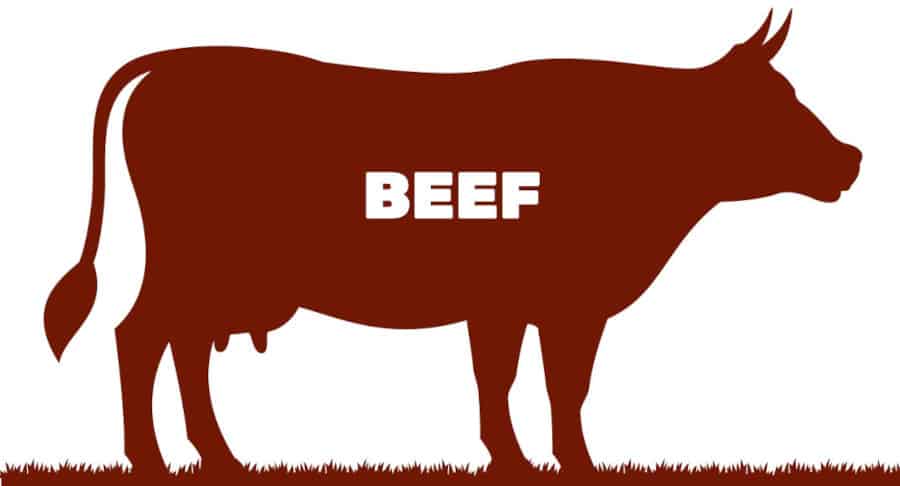
| Beef Cut | Smoker Temp | Finished Internal Temp | Time Required |
|---|---|---|---|
| Brisket | 225 – 250 °F | 203 °F+ | 1.5 hrs/lb, 10 – 18 hours |
| Prime Rib | 225 – 250 °F | 130 – 135 °F | 35 mins/lb, 3 – 6 hours |
| Beef Back Ribs | 225 – 250 °F | 203 °F | 3 – 5hours |
| Beef Short Ribs | 225 – 250 °F | 203 °F | 6 – 9 hours |
| Tri-tip | 225 – 250 °F | 130 – 135 °F | 1.5 – 2.5 hours |
| Chuck Roast | 225 – 250 °F | 180 °F | 1.5 hrs/lb, 5 – 8 hours |
| Sirloin Tip Roast | 225 – 250 °F | 135 – 140 °F | 2.5 – 4 hours |
| Rump Roast | 225 – 250 °F | 135 °F | 30 mins/lb, 3 – 6 hours |
| Tenderloin | 225 – 250 °F | 130 – 135 °F | 2 – 3 hours |
| Hamburger | 225 – 250 °F | 160 °F | 30 – 45 mins. |
| Beef Hot Dogs | 225 – 250 °F | 140 °F+ | 1 – 2 hours |
The above times and temperatures chart is for 'chef recommended' internal temperatures and doneness, which is mostly medium-rare.
However, not everybody likes their meat done the same way.
For different times and temps, to cook from rare to well done, please scroll down this article to find the particular cut you are smoking, and you will see additional times for different doneness levels.
The preferred smoker temperature is a consistent 225 to 250 °F across all cuts of beef, but the times and finished meat temperature vary widely.
Brisket
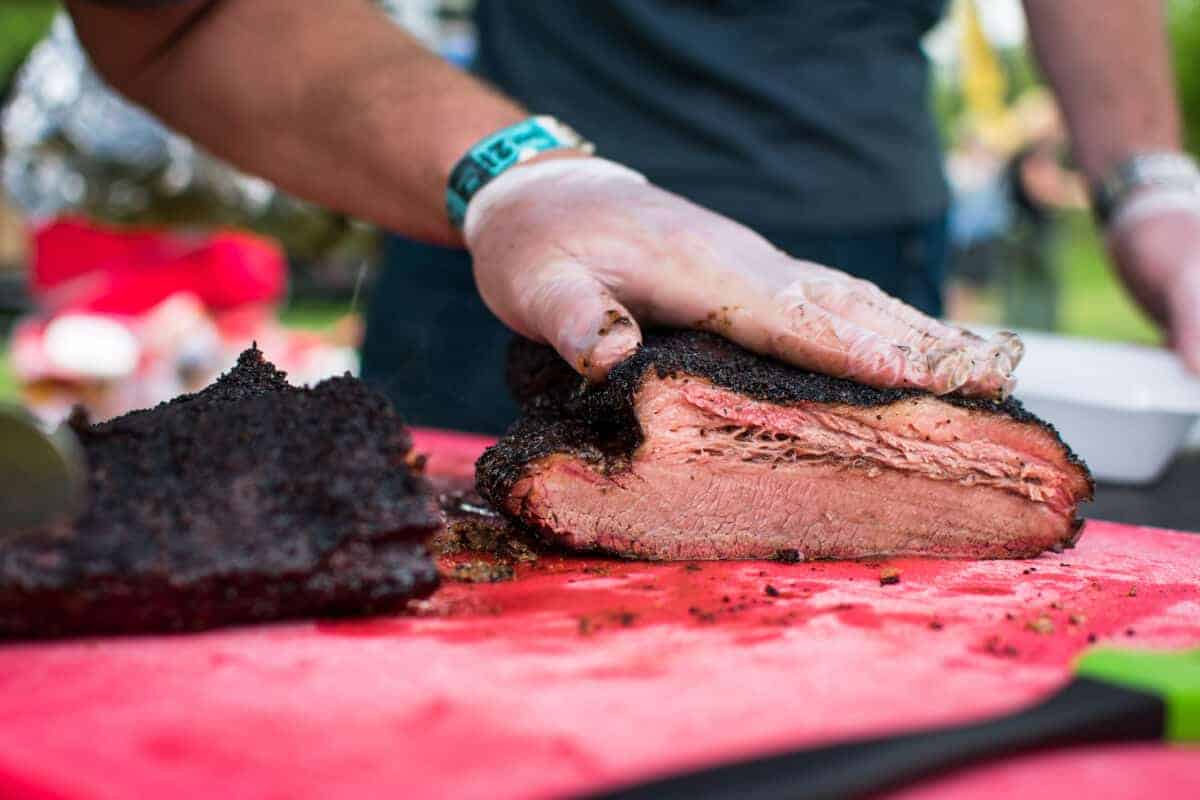
| Smoker Temp | Finished Internal Temp | Time required | |
|---|---|---|---|
| Thin sliced | 225 – 250 °F | 185F – 195 °F | 1.5 hrs/lb, (10 – 18 hours) |
| Thick sliced, (Chefs Rec.) | 225 – 250 °F | 203 °F+ | 1.5 hrs/lb, (10 – 18 hours) |
You want to cook brisket to a high temperature over a long time to tenderize the meat and render (melt) all the tough internal connective tissue, resulting in an incredibly moist and tender cut with a nice crust.
Now, I know to say a brisket will smoke in between 10 and 18 hours seems unhelpful on my part, but it's as good as you're going to get I'm afraid.
Every brisket is different, with a different weight, thickness, amount of marbling, moisture content, and amount of inter-connective tissue. I've had briskets of the same weight and size take 12 or 16 hours, it can vary that much.
So how to know when a brisket is done?
The absolute best temp to take it to is 203 °F+ but can vary between 203 °F and perhaps even as high as 212 °F.
The way to tell your brisket is done, is when the whole thing wobbles like jelly when you shake it, and when you prick it with a skewer or a thermometer probe, it goes through easily like a hot knife through butter.
If you do wish to slice it thinly, however, you will need to stop with the temperature of the meat at approx. 185 °F, else it will fall apart.
Prime Rib
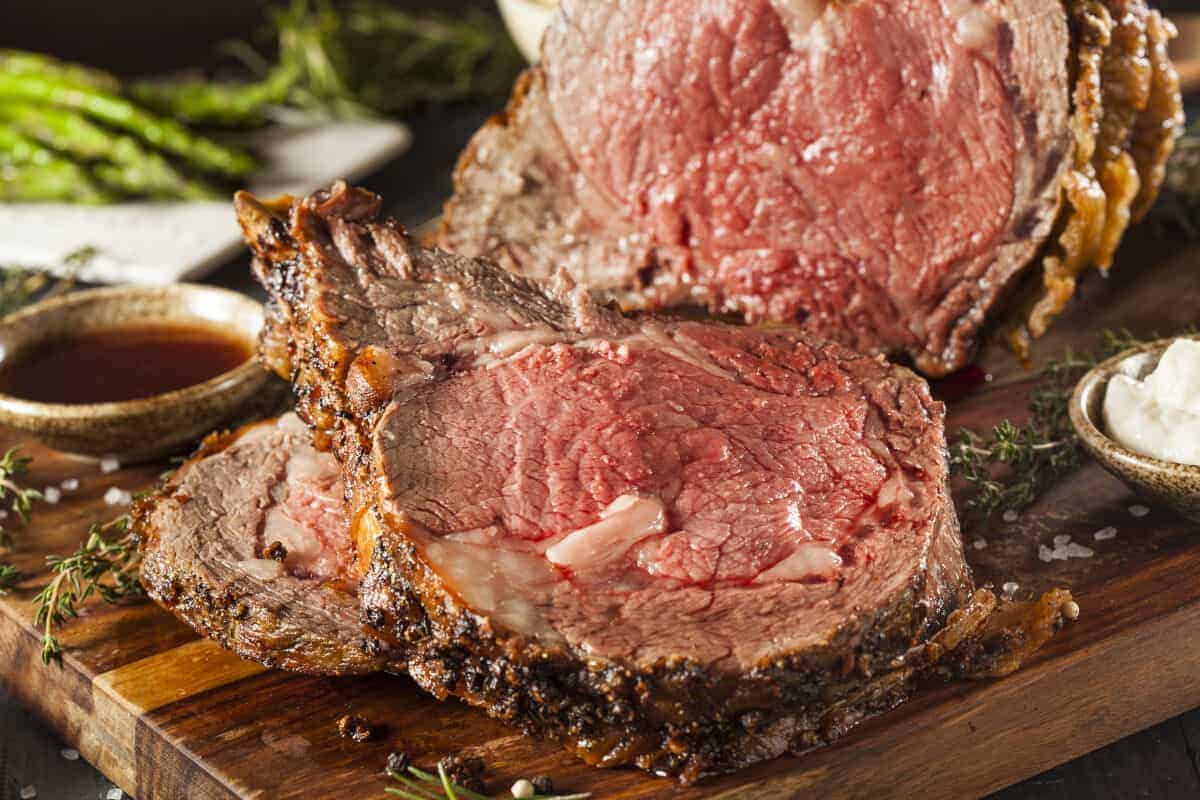
| Smoker Temp | Finished Internal Temp | Time required | |
|---|---|---|---|
| Rare | 225 – 250 °F | 125 – 130 °F | 30 mins/lb, 2.5 – 5 hours |
| Medium (Chef's Rec.) | 225 – 250 °F | 130 – 135 °F | 35 mins/lb, 3 – 6 hours |
| Well-Done | 225 – 250 °F | 140 – 145 °F | 40 mins/lb, 3.5 – 6.5 hours |
A typical prime rib is 3-7 bones and can weigh anything from 4 to 11 pounds or more. Therefore, to give a precise time to smoke is difficult.
So what I've done instead is give times per-pound, to reach different doneness levels, so you can calculate a rough time yourself.
The times I've given assume you have 3 ribs or more. A single rib or two will cook in way less time due to being so thin, but then what you really have is a steak.
I strongly recommend cooking a prime rib to a finished meat temperature close to 135 °F.
This is because taking it to a good medium-rare range allows the internal fat to cookout and render a little more, resulting in juicier meat with fewer lumps of almost raw fat in it.
Also, I strongly recommend taking the meat off a good 10 °F before you hit your target, resting, then cranking up the heat to give it a good sear to bring it up to finished temp. A flavorful seared crust is essential for maximum enjoyment of this cut.
Beef Back Ribs
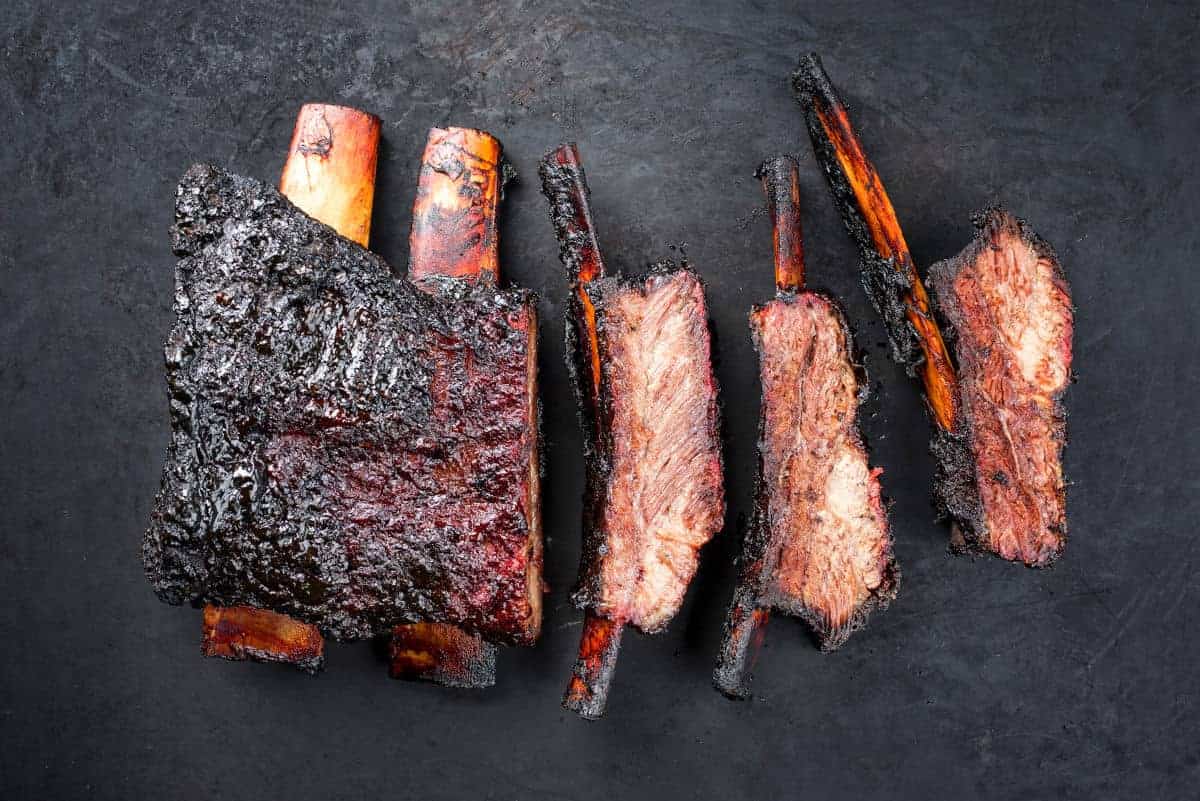
| Smoker Temp | Finished Internal Temp | Time required |
|---|---|---|
| 225 – 250 °F | 203 °F | 3 – 5hours |
You will see many recipes calling for the back ribs to sliced into individual ribs before smoking, and you can indeed buy them this way. However…
I've tried separating them and smoking them individually. I've also smoked them in pairs, and as 3….4…5 bone…
By far the worst for me was smoking individually. They dry out a tad too much and aren't as good as when smoked as a larger cut.
However, cooking in pairs can be good if you want to maximize on the amount of crust and rub you get per portion 😉
Beef Short Ribs
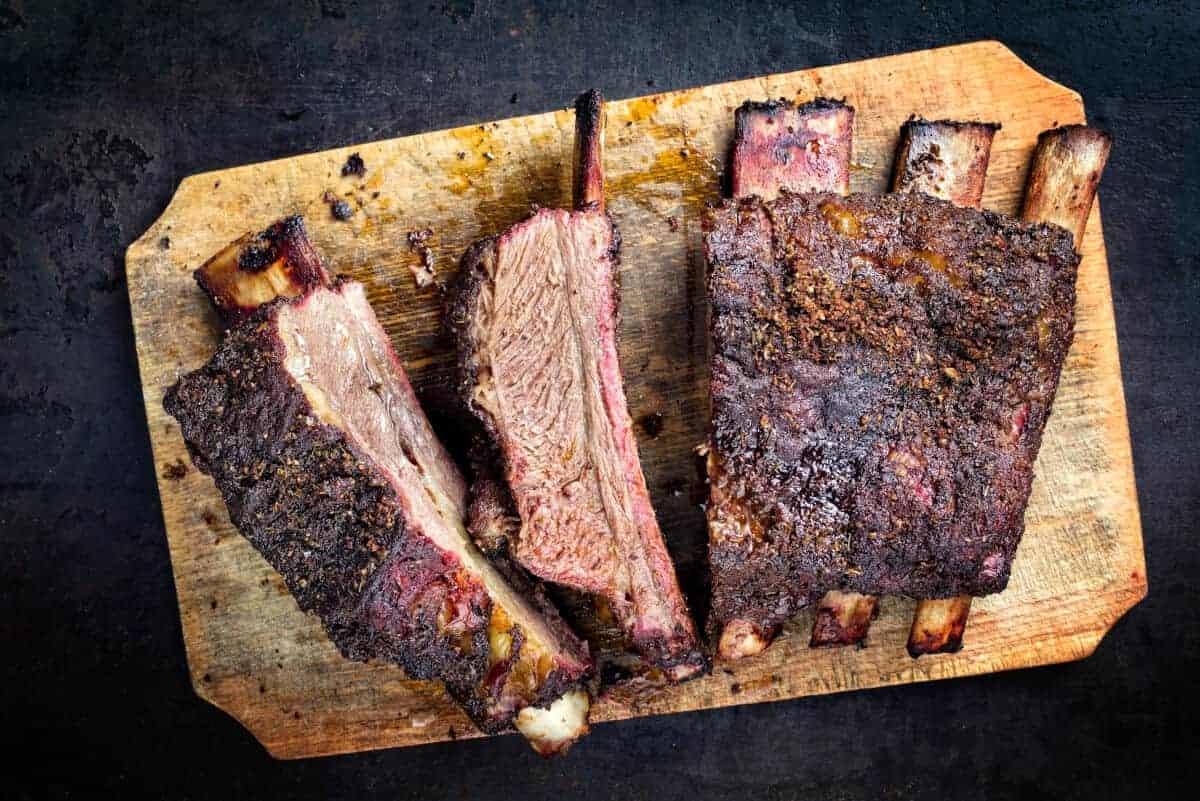
| Smoker Temp | Finished Internal Temp | Time required |
|---|---|---|
| 225 – 250 °F | 203 °F | 6 – 9 hours |
Beef short ribs are my absolute favorite cut of meat for the smoker!
I describe them as just as flavorful — or more — as brisket, costing way less, and they cook in half the time. What's not to love?
You can check out my recipe for beef ribs here: Smoked beef short ribs.
Tri-Tip
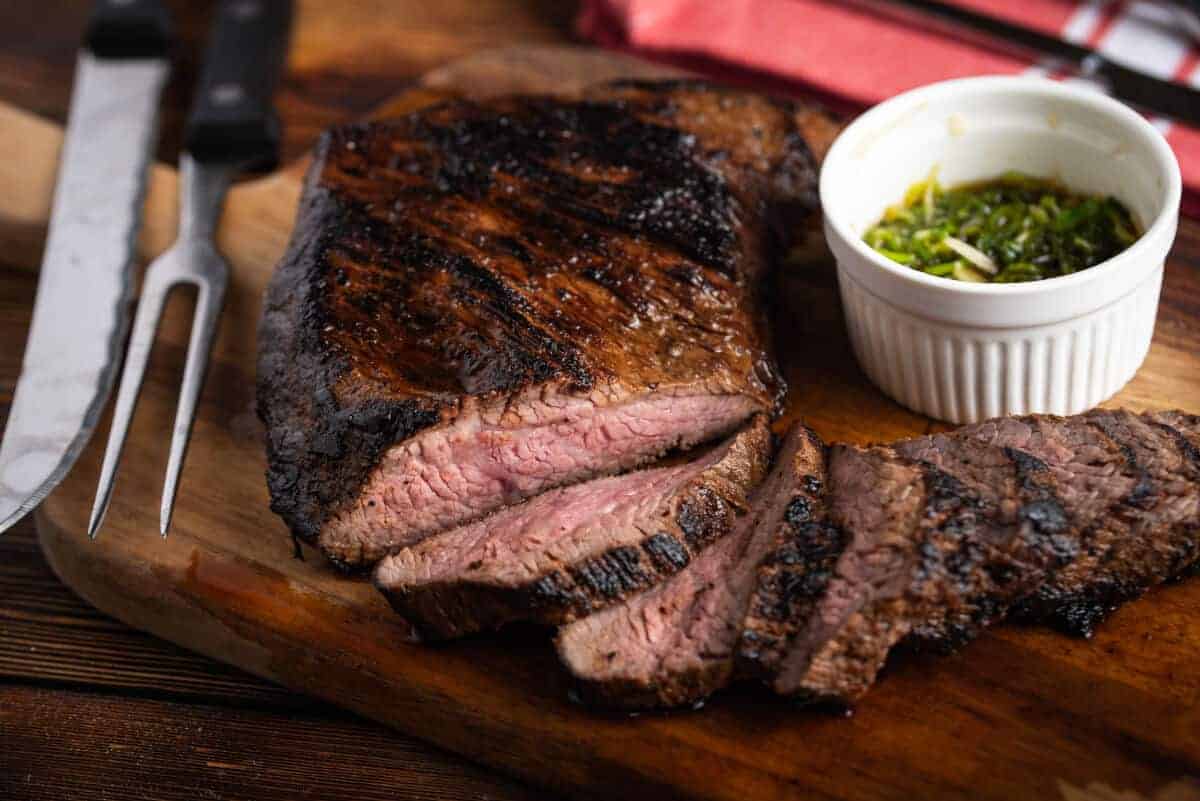
| Smoker Temp | Finished Internal Temp | Time required | |
|---|---|---|---|
| Rare | 225 – 250 °F | 120 – 130 °F | 1 – 2 hours |
| Medium-Rare (Chef's rec.) | 225 – 250 °F | 130 – 135 °F | 1.5 – 2.5 hours |
| Medium | 225 – 250 °F | 135 – 145 °F | 2.5 – 3.5 hours |
| Well-Done | 225 – 250 °F | 155 °F+ | 4 hours+ |
Tri-tip without a seared crust is a sin!
So whatever 'doneness' you are aiming for, take it off the smoker a good 10 degrees Fahrenheit before it hits, let it rest a few minutes, then give it a good sear all over to bring it up to your desired finished temp.
Chuck Roast
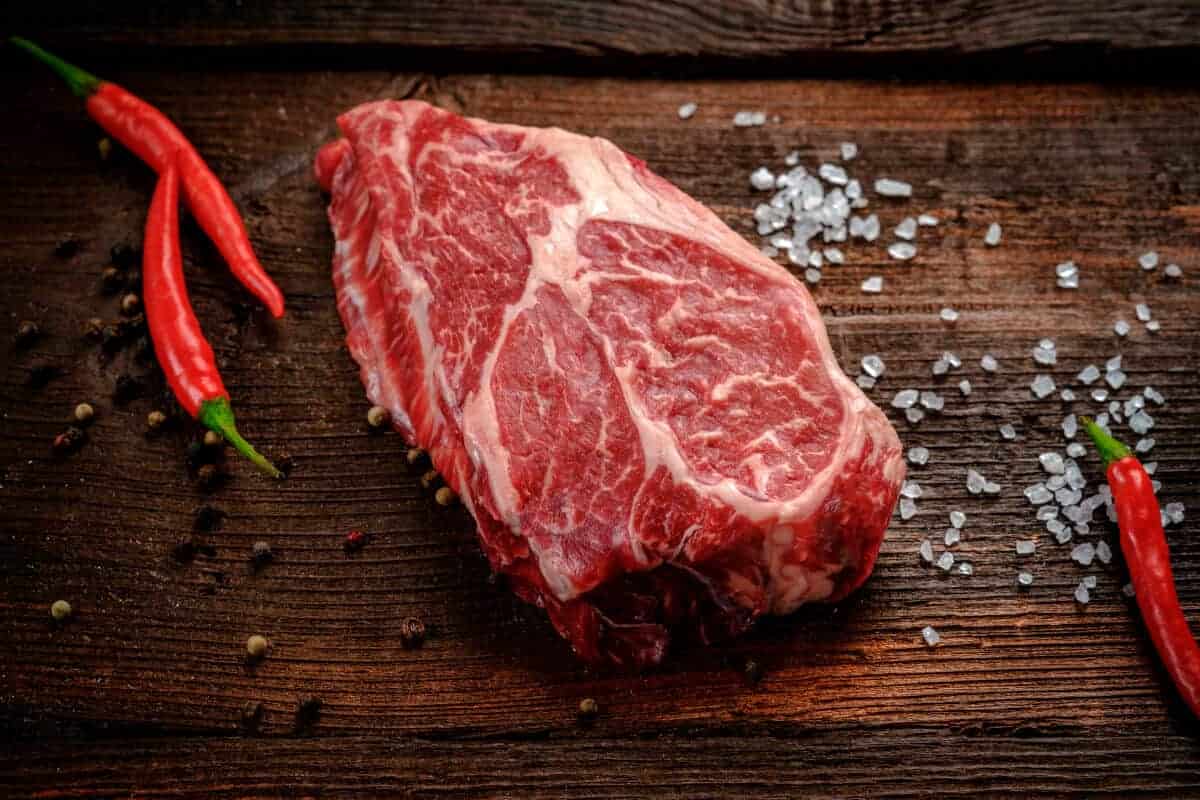
| Smoker Temp | Finished Internal Temp | Time required | |
|---|---|---|---|
| Sliced Rare | 225 – 250 °F | 120 – 130 °F | 1 hr/lb, 3 – 5 hours |
| Sliced Medium | 225 – 250 °F | 135 – 145 °F | 1.25 hrs/lb, 4 – 6 hours |
| Sliced Well-Done | 225 – 250 °F | 155 °F+ | 1.5 hrs/lb, 4 – 7 hours |
| Sliced, (Chef's Rec. Temp) | 225 – 250 °F | 180 °F | 1.5 hrs/lb, 5 – 8 hours |
| Pulled Beef | 225 – 250 °F | 203 °F | 1.5 hrs/lb, 6 – 10 hours |
Many people smoke and eat chuck roast at rare to medium-rare, but in my opinion, it's just not the best use of this cut.
For me, chuck roast should be taken way past 'well done,' and either sliced thick at 180 °F to mimic a brisket somewhat, or taken to 203 °F+ and then shredded.
Note: A chuck eye roast, or chuck eye roll is the exception here! This is a wonderful cut that's best medium-rare and sliced.
Sirloin Tip Roast
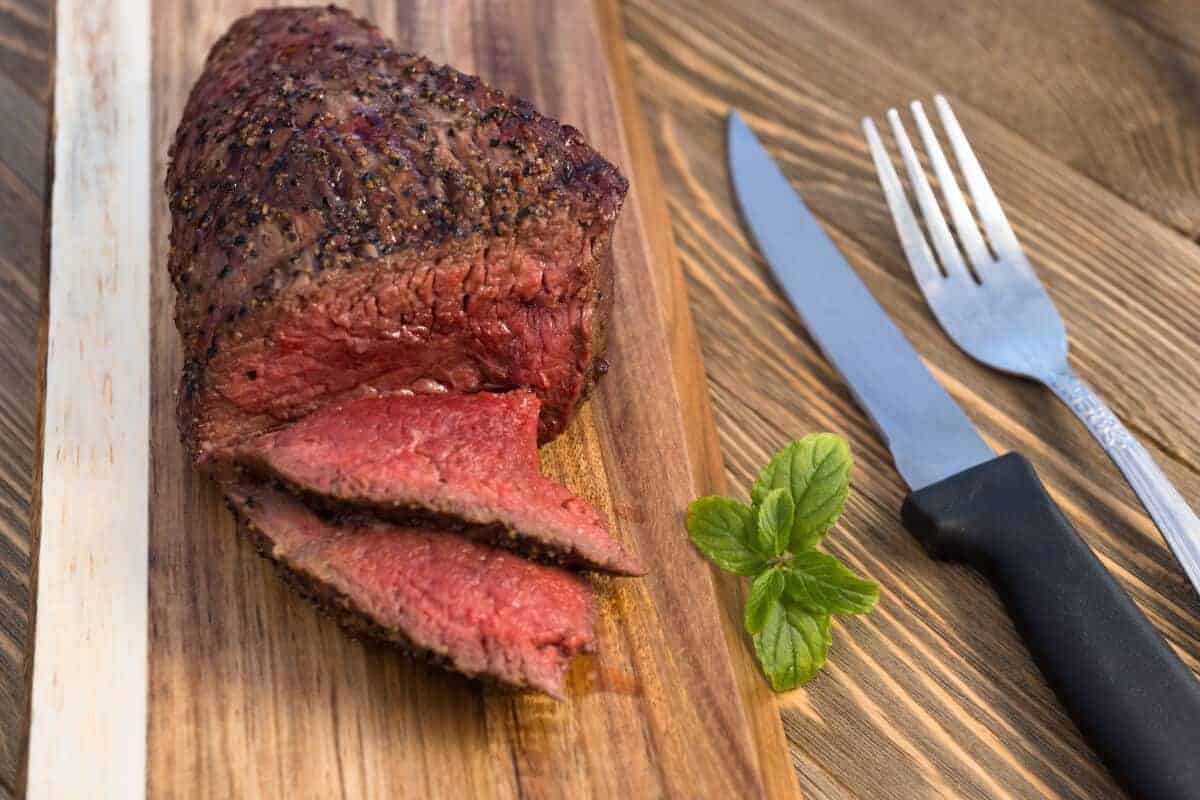
| Smoker Temp | Finished Internal Temp | Time required |
|---|---|---|
| 225 – 250 °F | 135 – 140 °F | 2.5 – 4 hours |
You are, of course, welcome to cook a sirloin tip anywhere from rare to well done, but medium-rare is the sweet spot and what most people will appreciate with this cut.
And as with most beef: Make sure to take it off the smoker a good 10 degrees under target temp and give it a good sear for added flavor.
Rump Roast
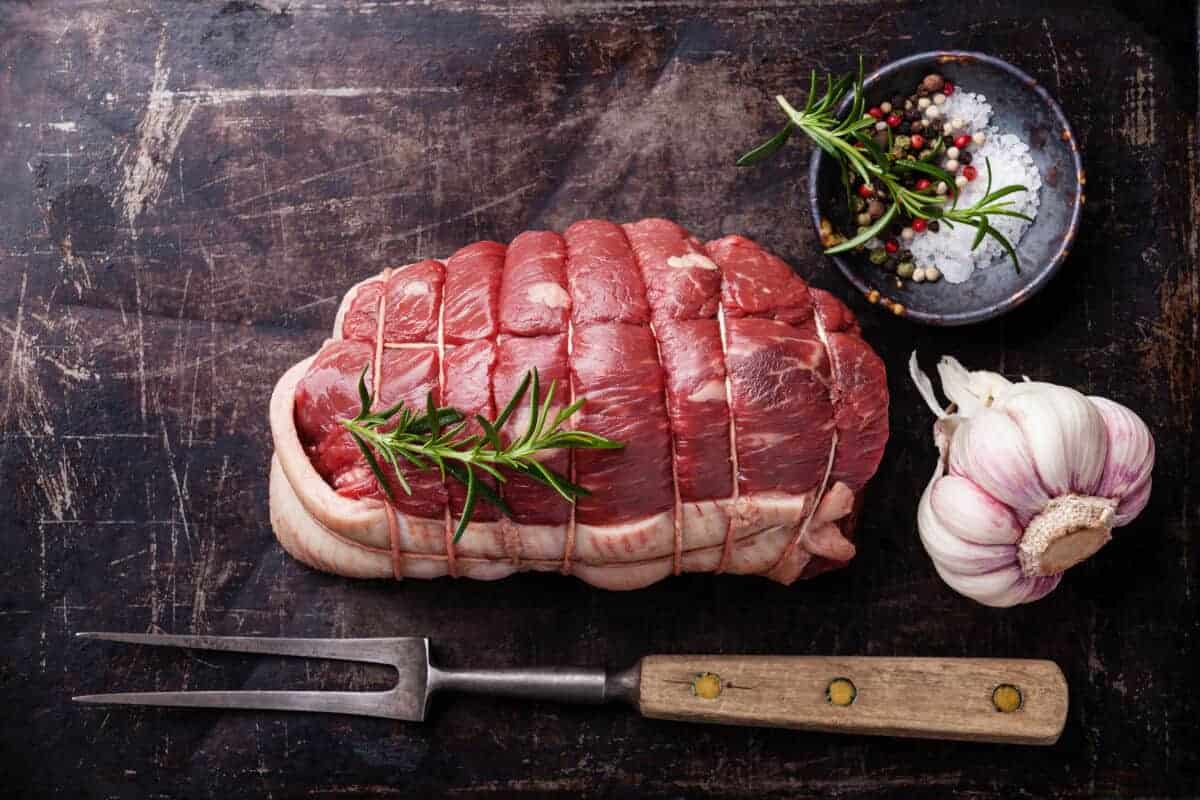
| Smoker Temp | Finished Internal Temp | Time required |
|---|---|---|
| 225 – 250 °F | 135 °F | 30 mins/lb, 3 – 6 hours |
Rump roast is a very lean cut, so I do not recommend going past medium-rare unless you like a good chew.
And for the same reason, make sure to slice it very thinly for serving. It creates an illusion of a far more tender cut than it really is when thin sliced.
Tenderloin
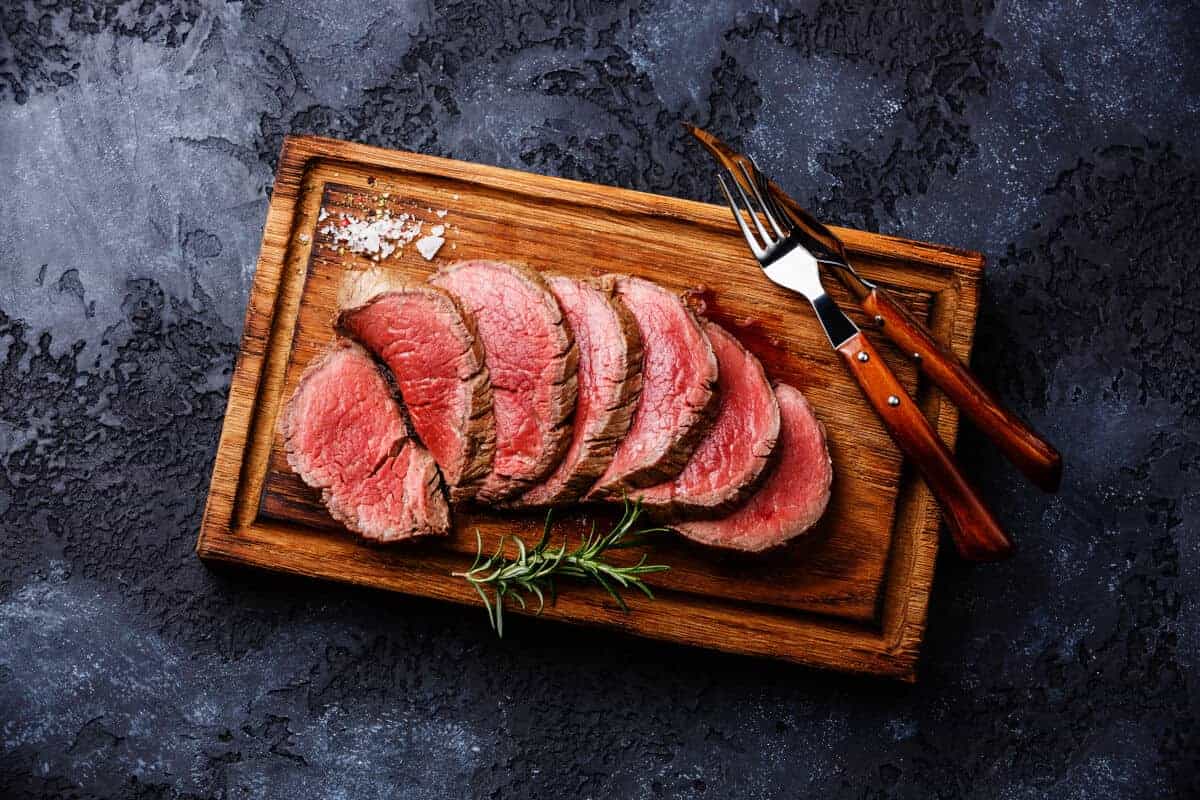
| Smoker Temp | Finished Internal Temp | Time required | |
|---|---|---|---|
| Rare | 225 – 250 °F | 120–130 °F | 1 – 2 hours |
| Medium-Rare (Chefs Rec.) | 225 – 250 °F | 130–135 °F | 2 – 3 hours |
| Medium | 225 – 250 °F | 135–145 °F | 3 – 4 hours |
| Well-Done | 225 – 250 °F | 155 °F+ | 3.5 – 4.5 hours |
Beef tenderloin is incredibly lean and tender…when cooked right.
I strongly recommend keeping this cut between rare and medium-rare. I much prefer medium-rare, where you can still cut it with a spoon!
Rare is also good, but any higher than medium-rare, and you lose the tenderness for which this cut is famed.
Hamburger

| Smoker Temp | Finished Internal Temp | Time required |
|---|---|---|
| 225 – 250 °F | 160 °F | 30 – 45 mins. |
Cooking hamburgers to a minimum temperature of 160 °F is recommended by most government food agencies, and it is illegal for a restaurant to serve a burger cooked lower than this temperature in many jurisdictions.
By choosing quality meat, and using safe handling techniques, however, many people feel it is acceptable to serve a medium — rare burger. That decision, I'll leave up to you.
Unlike with whole beef cuts like steaks, E. Coli can get right into a lump of ground beef because the exterior of the meat is blended with the interior during the grinding process.
Many people firmly believe it's OK to serve burgers cooked to lower temperatures, so long as the butcher correctly handled the beef, and it came from a clean slaughterhouse.
I've provided guidelines for well — done, and this is how I always cook them. It is, however, up to you to decide how you want to cook your burgers.
Beef Hot Dogs
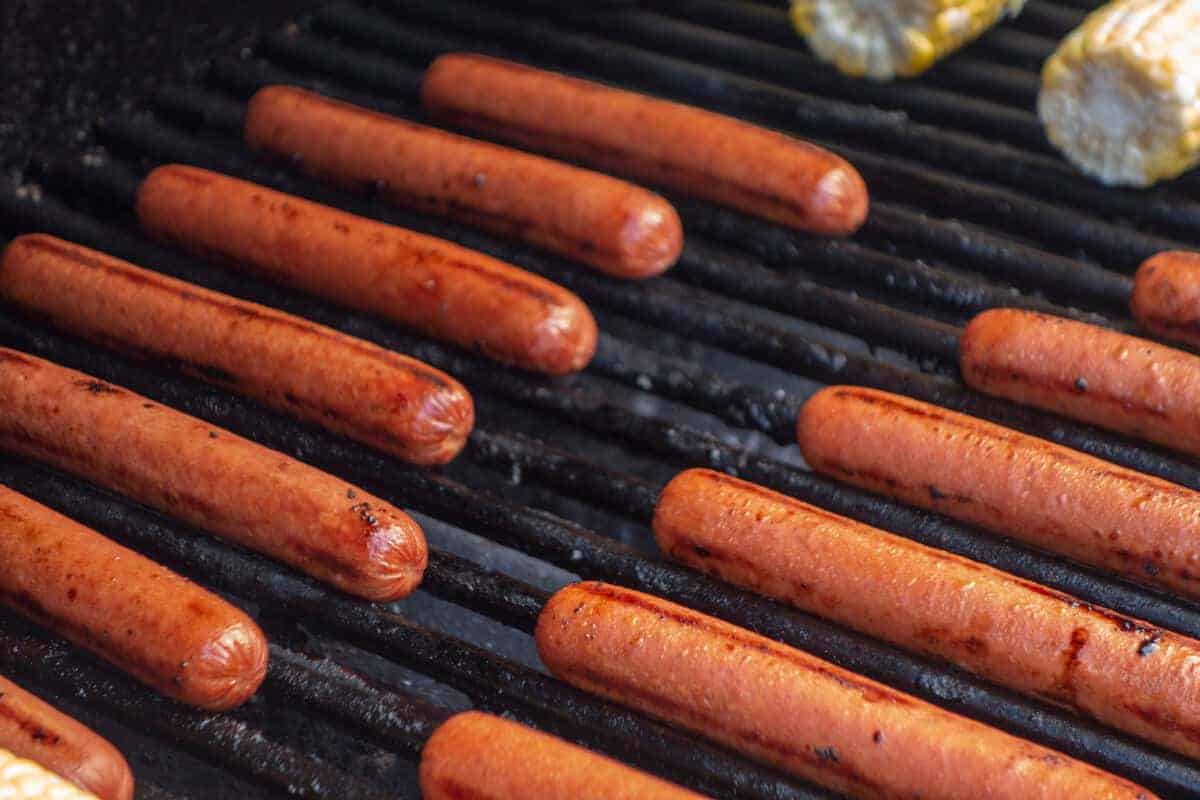
| Smoker Temp | Finished Internal Temp | Time required |
|---|---|---|
| 225 – 250 °F | 140 °F+ | 1 – 2 hours |
Beef hot dogs are precooked, so it technically doesn't matter how long you grill or smoke them as long as you hit a good 140 °F for a length of time to kill surface bacteria.
However, to maximize the flavor and have a really enjoyable hot dog, a bit of heat (and smoke) goes a long way.
Pork Smoking Times and Temperatures
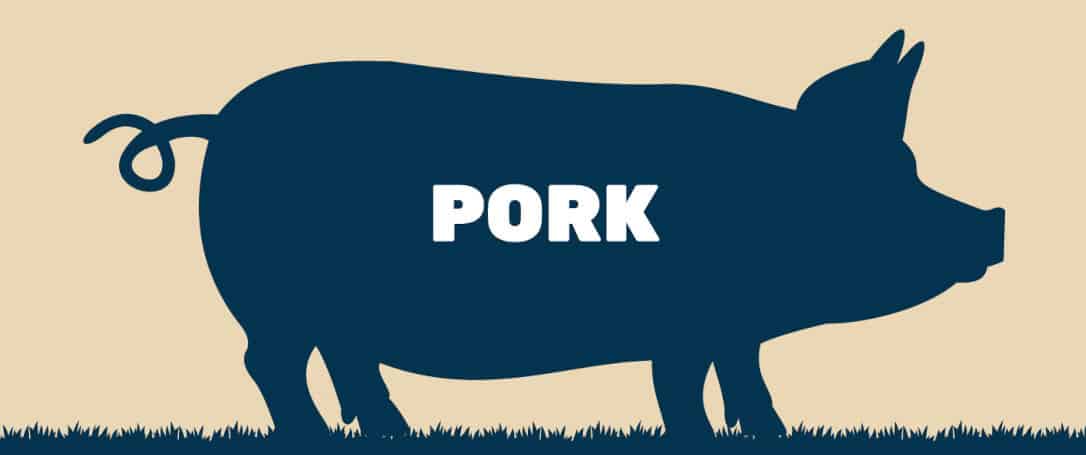
| Pork Cut | Smoker Temp | Finished Internal Temp | Time Required |
|---|---|---|---|
| Pork Butt | 225 – 250 °F | 195 °F+ | 1.5 hrs/lb, (8 – 15 hours) |
| Pork Shoulder (Sliced) | 225 – 250 °F | 175 °F | 1.5 hrs/lb, (5 – 9 hours) |
| Pork Shoulder (Pulled) | 225 – 250 °F | 195 °F+ | 1.5 hrs/lb, (7 – 12 hours) |
| Spare Ribs | 225 – 250 °F | 190 – 203 °F | 5 – 7 hours |
| Baby Back Ribs | 225 – 250 °F | 190 – 203 °F | 3.5 – 5 hours |
| Ham (Fresh or precooked) | 225 – 250 °F | 145 °F | 3 – 5hours |
| Crown Roast | 225 – 250 °F | 145 °F | 1.25 hrs/lb, (7 – 12 hours) |
| Loin | 225 – 250 °F | 145 °F | 2 – 4 hours |
| Tenderloin | 225 – 250 °F | 145 °F | 1 – 2 hours |
| Belly (whole) | 225 – 250 °F | 195 – 203 °F | 5 – 7 hours |
| Sausage | 225 – 250 °F | 160 °F | 1.5 – 2 hours |
| Whole Hog | 225 – 250 °F | 200 – 205 °F | 7 mins/lb, 4 – 18 hours |
Most people think to take pork above 160 °F internal temperature because historically undercooked pork was a source of trichinosis, and this minimum temperature was needed to kill it.
However, thanks to advances in modern pork farming, this is no longer the case, and the USDA revised the safe temperature for pork down to 145 °F.
This is great news! At 145 degrees Fahrenheit internal temp, pork is still a little pink, a lot more moist and tender, and a greater pleasure to eat!
Many people still argue that 160 °F is safer, and through many years of cooking this temp actually prefer it. I guess the choice is yours?
As with beef, the smoker temperature is a consistent 225 to 250 °F across all pork cuts, but the finished meat temperature and the time it can take varies from cut to cut.
Pork Butt
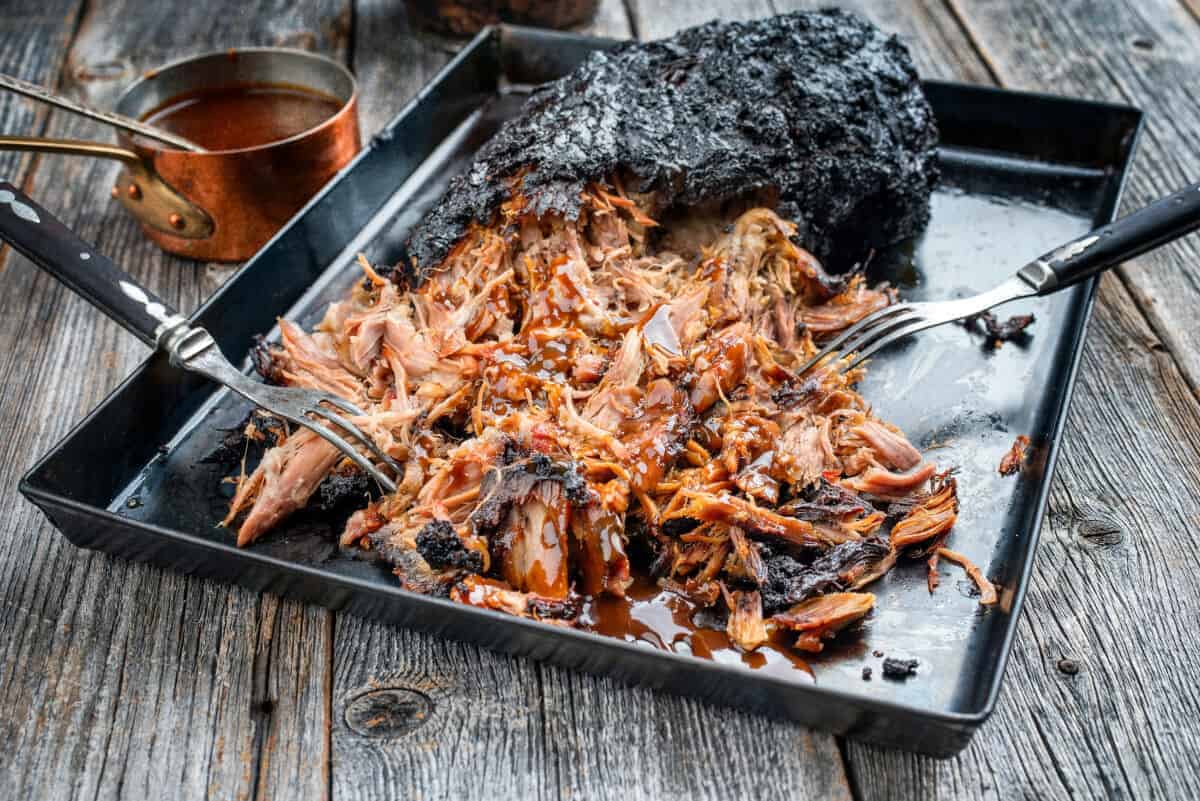
| Smoker Temp | Finished Internal Temp | Time required |
|---|---|---|
| 225 – 250 °F | 195 °F+ | 1.5 hrs/lb, (8 – 15 hours) |
Many people will argue that the temperature you cook your butt to will depend on whether you plan to slice it or pull it.
For our purposes, I've assumed you're going to pull it. And if you do want sliced, I recommend a pork shoulder instead (not a butt), as they have less connective tissue and are better at a lower slicing temperature.
For sliced, cook to 185 °F and adjust your time accordingly, though I do recommend going higher and pulling.
To know when your pork butt is ready for pulling, It should be a MINIMUM 195 degrees Fahrenheit throughout, usually higher. It should be absolutely tender throughout, giving no resistance when a skewer or probe is inserted.
Pork Shoulder
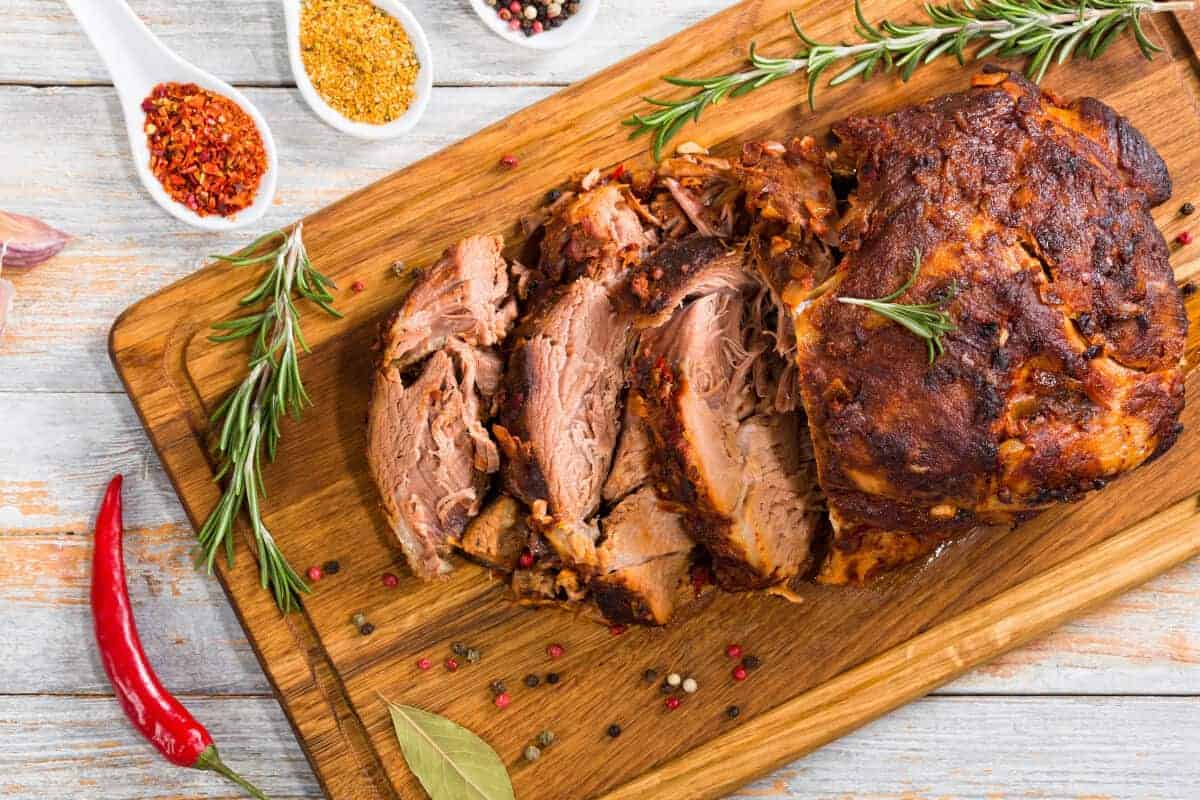
| Smoker Temp | Finished Internal Temp | Time required | |
|---|---|---|---|
| Sliced | 225 – 250 °F | 175 °F | 1.5 hrs/lb, (5 – 9 hours) |
| Pulled | 225 – 250 °F | 195 °F+ | 1.5 hrs/lb, (7 – 12 hours) |
The pork shoulder is often confused with the butt, with many people using the terms interchangeably. However, as discussed in more depth in our article on pork butt vs shoulder, they are a very different cut but can be used the same way.
Nice when sliced, great when pulled, the choice is yours, and we've provided smoking temps and times for both.
Spare Ribs
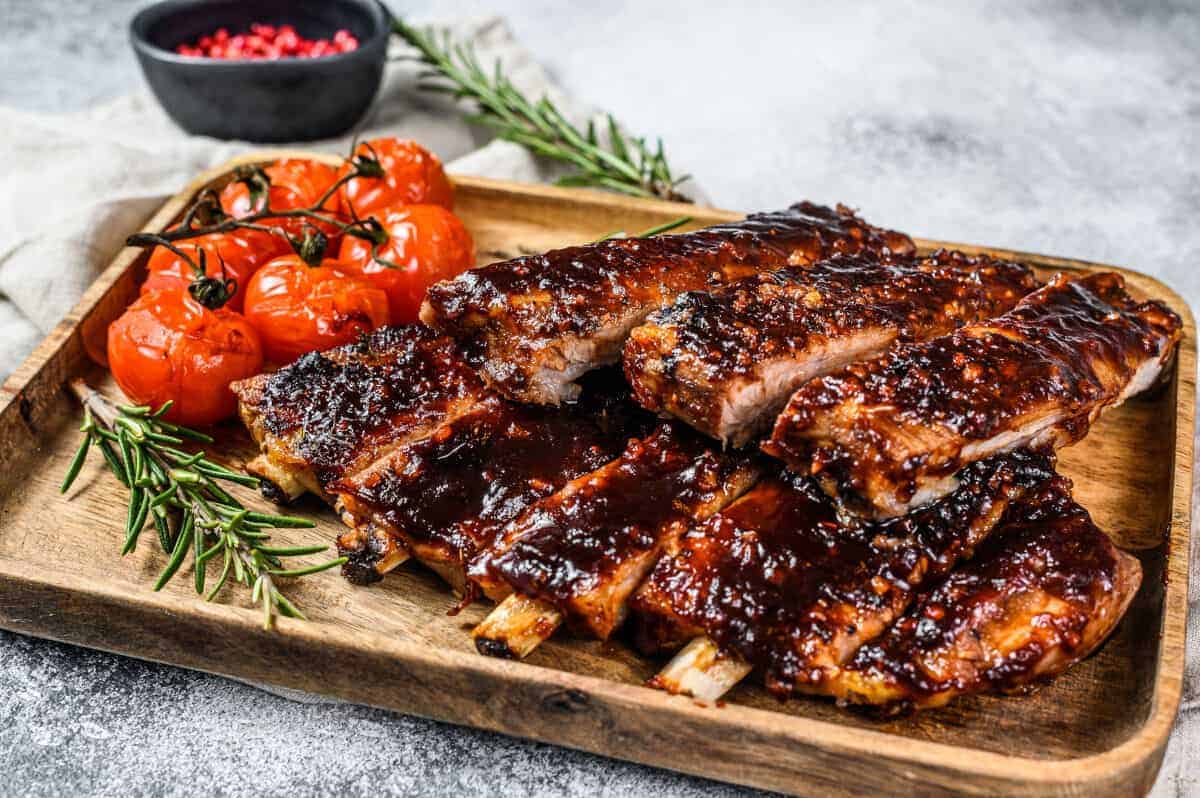
| Smoker Temp | Finished Internal Temp | Time required |
|---|---|---|
| 225 – 250 °F | 190 – 203 °F | 5 – 7 hours |
In our article on how long to grill ribs, we covered extensively how to know when your ribs are done. But here's the summarized version:
They should come away from the bone easily, but not be 'falling off the bone.' You still want some 'bite' there.
The Bend Test — Use tongs to pick up your ribs in the middle. Gently lift, and if you see the meat start to crack and break away from the bone, they're probably done.
The Toothpick Test — All you do is stick a skewer or toothpick into the meat between the bones. It should go in with almost no resistance whatsoever. Just make sure to check in multiple places.
All ribs are different, and some may be ready at 190 °F, while others need to go up past 200 °F. I know, annoying, right? Just start to bend and probe at 190 °F, and keep checking every 15 minutes after until they feel done according to the two tests above.
Baby Back Ribs
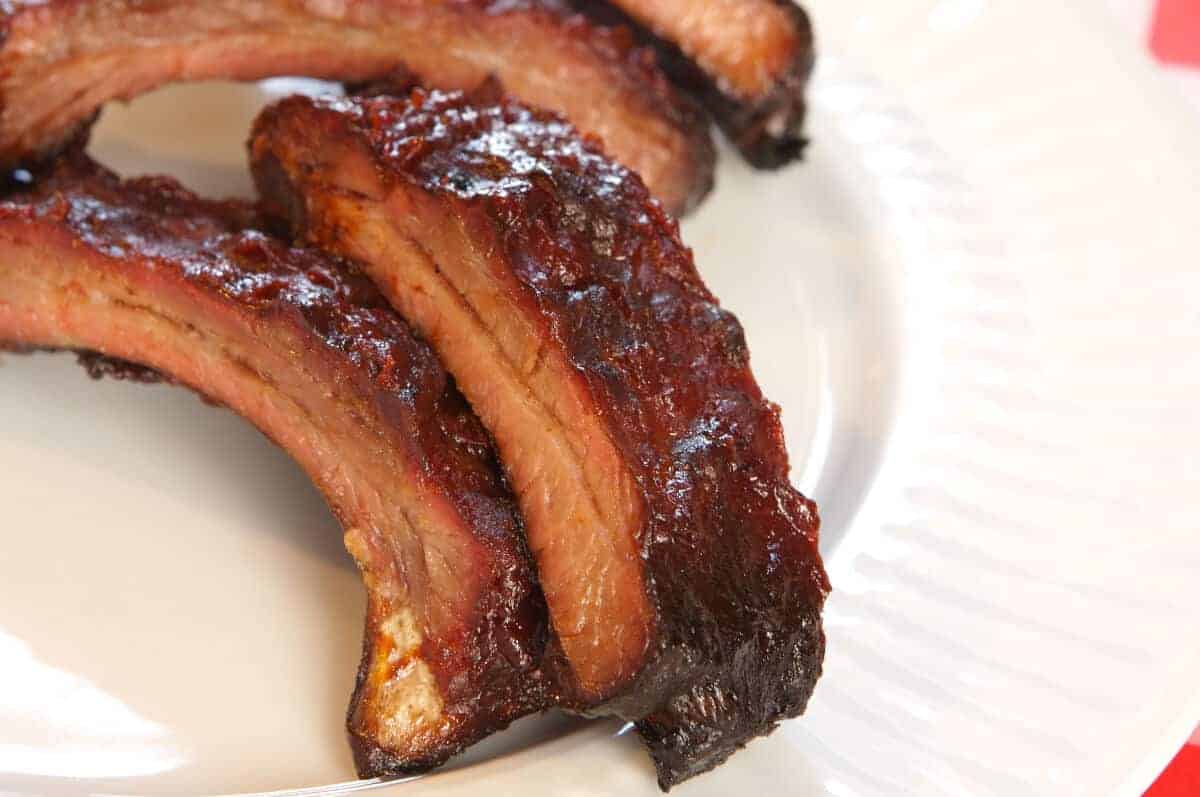
| Smoker Temp | Finished Internal Temp | Time required |
|---|---|---|
| 225 – 250 °F | 190 – 203 °F | 3.5 – 5 hours |
Baby back ribs cook similarly to spare ribs (above), but because they are smaller and thinner they take a fair bit less time.
Use the same tests for doneness as with spares — the bend and toothpick tests described above — to know when they are ready.
Ham

| Smoker Temp | Finished Internal Temp | Time required |
|---|---|---|
| 225 – 250 °F | 145 °F | 3 – 5 hours |
Great when warm, great when cold, nice as the main part of a meal, or sliced for a weekday sandwich, ham is a wonderful cut that you can flavor in so many different ways with your choice of brine ingredients, injections, glazes and more.
I recommend wrapping your ham after the first two hours or so of smoke, as this will help keep the moisture in and result in a far more tender and juicy ham.
Crown Roast
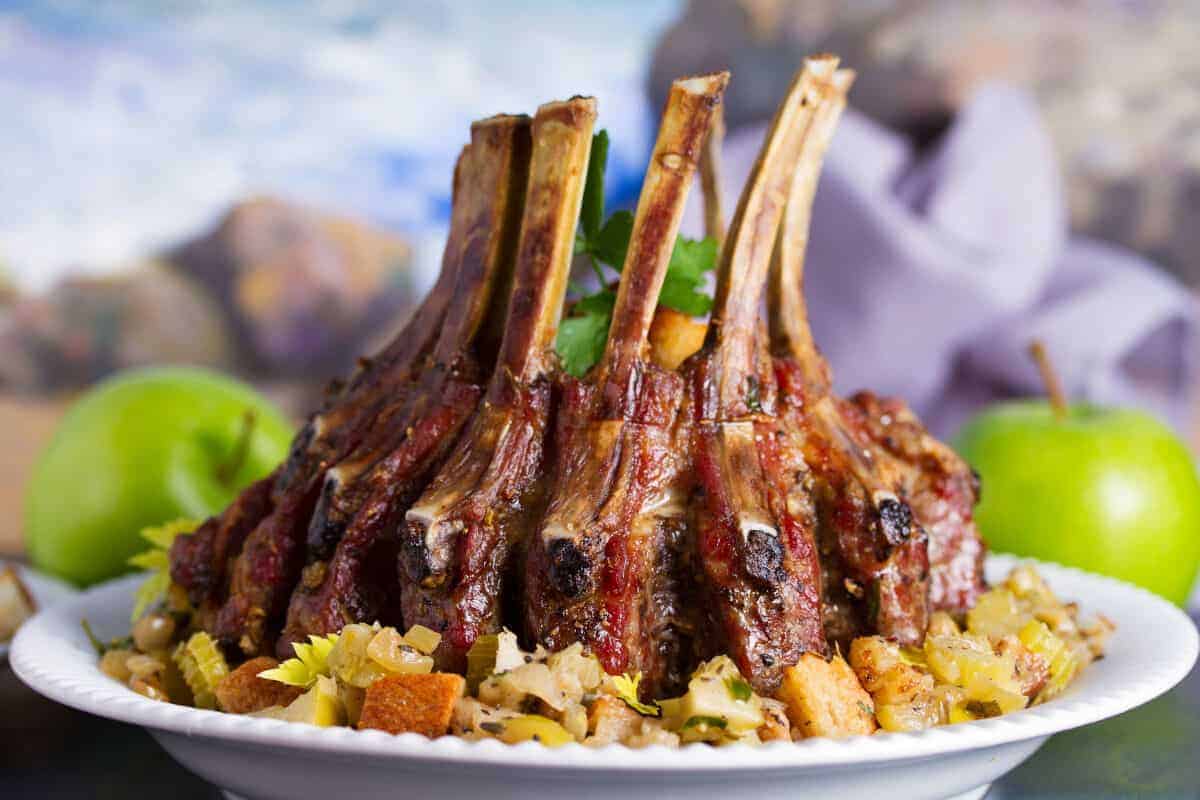
| Smoker Temp | Finished Internal Temp | Time required |
|---|---|---|
| 225 – 250 °F | 145 °F | 1.25 hrs/lb, (7 – 12 hours) |
To say a crown roast takes 7 to 12 hours is a crazy margin for error, right? Can't I be more precise? Sadly not.
This cut can weigh anything 5 to 10 pounds, and if you stuff it — which I recommend you do — then this weight has to be taken into consideration too.
1.25 hours per-pound is a reasonable guesstimate and easy enough to calculate once you have the total weight, including stuffing.
Loin
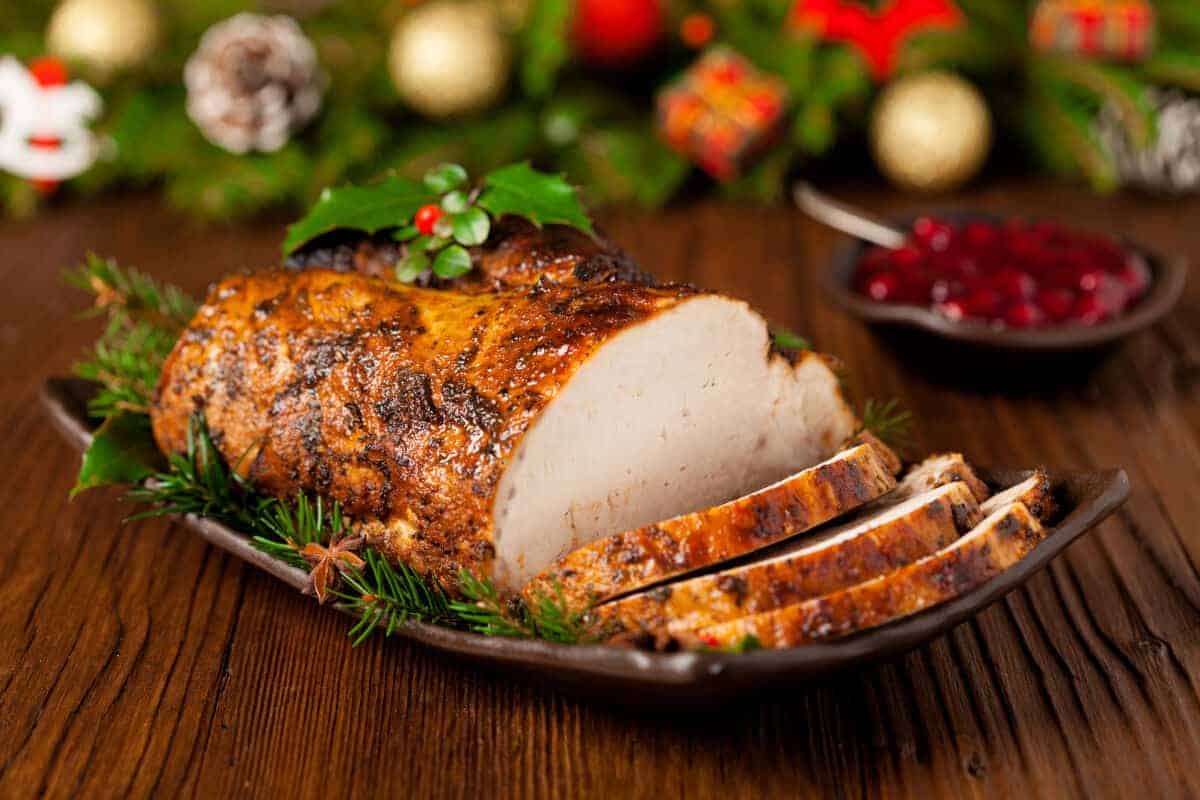
| Smoker Temp | Finished Internal Temp | Time required |
|---|---|---|
| 225 – 250 °F | 145 °F | 2 – 4 hours |
Pork loin has a tendency to dry out, so keeping your smoker truly low and slow, and cooking it to 145 °F and barely a degree over is key.
Tenderloin
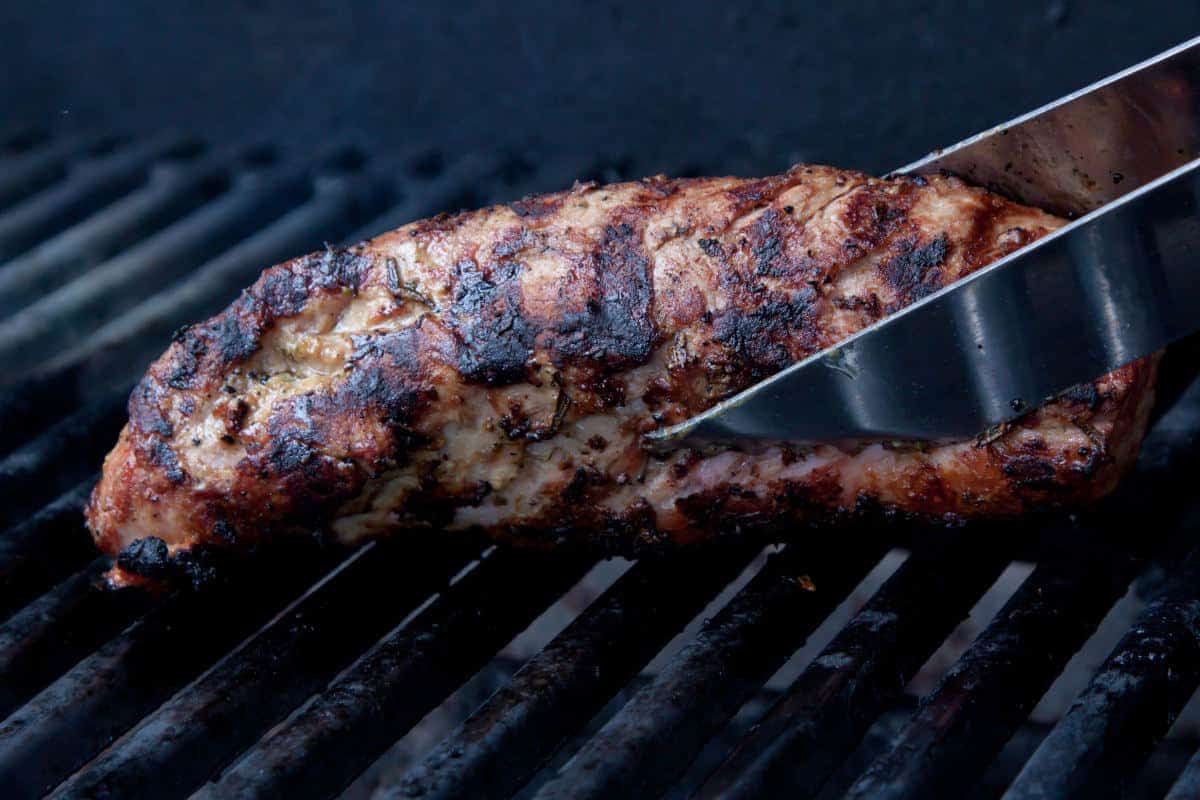
| Smoker Temp | Finished Internal Temp | Time required |
|---|---|---|
| 225 – 250 °F | 145 °F | 1 – 2 hours |
Pork loin and pork tenderloin are not the same cut, should be cooked differently, and cannot be used interchangeably.
Pork tenderloin is a far smaller cut from an entirely different muscle of the animal. It's also leaner, incredibly tender, and dare I say it? Lacks a bit of flavor compared to most pork cuts.
So I recommend going wild with a wet brine or marinade, a bit of dry rub, and definitely a quick sear after smoking. So make sure to stop smoking before your target temp to allow for some extra grilling.
Pork Belly (Whole)

| Smoker Temp | Finished Internal Temp | Time required |
|---|---|---|
| 225 – 250 °F | 195 – 203 °F | 5 – 7 hours |
You will find many recipes that say to cook the pork belly to 165 °F or so. However, I find that the meat and particularly the fat is far from tender at this point, which is why I recommend going much higher.
At about 185 °F+, the fat really starts to render and soften, creating the juiciest piece of pork you can get from a hog.
So take my word for it and smoke the belly until it gets up past up 195 °F. At this point, probe it for tenderness, and it's done when an inserted toothpick meets no resistance all over.
Also, unless you want to broil or pour over screaming hot oil when it's finished in order to make crispy crackling, I recommend removing the rind/skin. Otherwise, it will be rubbery, chewy, and not all too pleasant after smoking low n slow.
Sausage
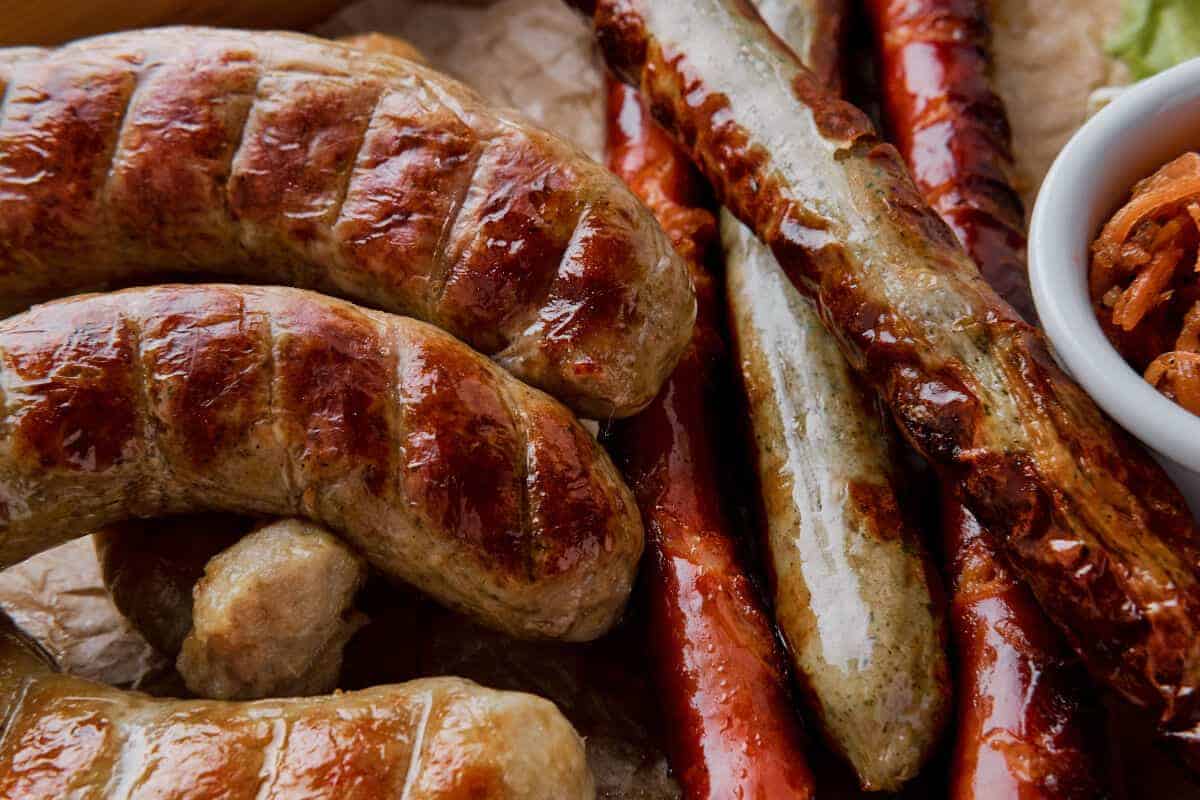
| Smoker Temp | Finished Internal Temp | Time required |
|---|---|---|
| 225 – 250 °F | 160 °F | 1.5 – 2 hours |
Although wieners are almost always precooked, many pork sausages are not. For that reason, you need to cook to a safe temperature.
Most regulatory bodies recommend 160 °F for pork sausage, though some people stop at 150 °F.
As long as the casing stays mostly intact, the juices will remain inside at the higher temperature, and it'll be a perfectly tasty sausage!
Sausage cooking is full of conflicting philosophies: some people boil them first, some score them, some poke holes, some grill directly.
You'll have to decide for yourself what you prefer, but I'm inclined NOT to prick the skins and to take the time and do them slowly over indirect heat for the juiciest result.
Whole Hog
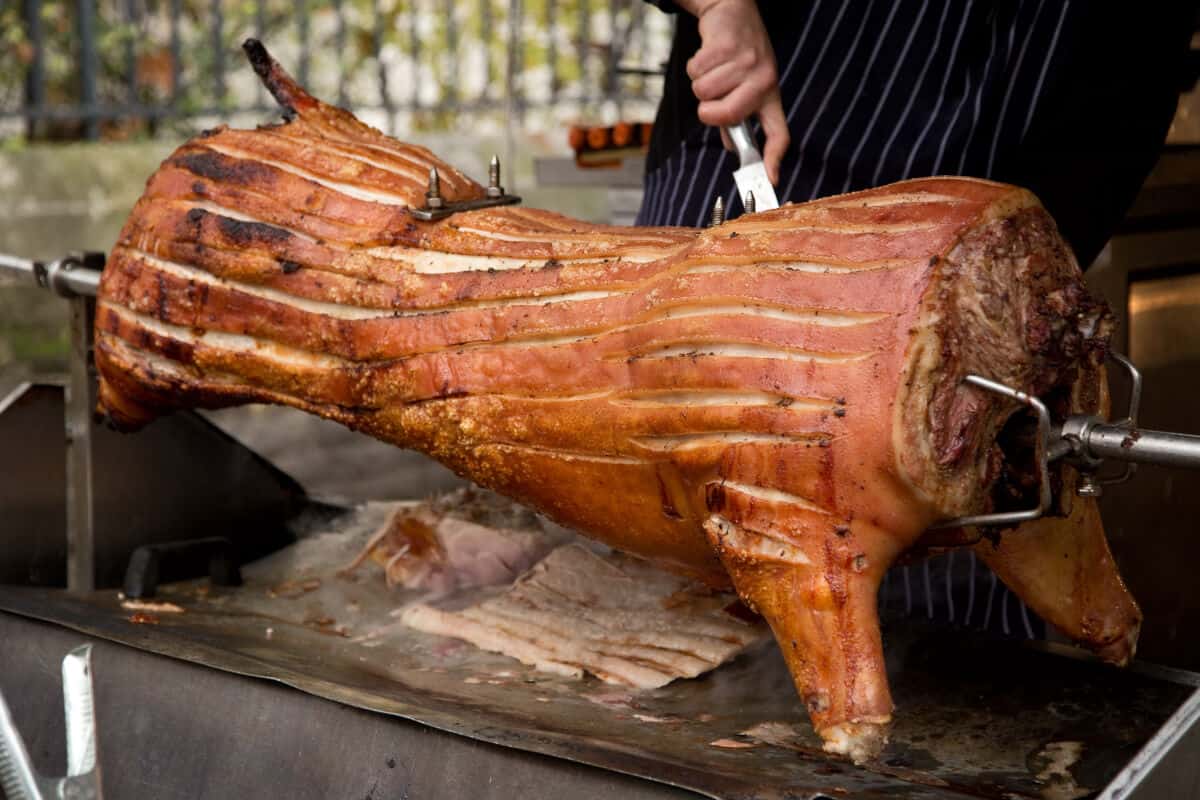
| Smoker Temp | Finished Internal Temp | Time required |
|---|---|---|
| 225 – 250 °F | 200 – 205 °F | 7 mins/lb, 4 – 18 hours |
It has to be said that cooking a whole hog isn't the way to get the best out of each part of the animal. However, it's a show-stopper for sure, and an impressive feat if you can pull it off right.
The problem lies in the fact that different parts of the animal are ready at wildly different temperatures, such as loin and tenderloin being best at 145 °F, and shoulder and butt being ready at 195 to 203 °F. Pretty much impossible to achieve when cooking the whole animal at the same time.
So the best way to handle a whole hog is to smoke the whole thing up to 200 °F+, then shred it and serve as pulled pork.
Now onto the smoking time: 7 minutes per-pound, and 4 to 18 hours. I know it sounds ridiculously vague. But a whole hog can be anything from a 20 lb suckling pig, right up to a 150lb whole hog, which will obviously take wildly different times.
So, the rule of thumb is:
Take the weight in pounds, and multiply by 7 minutes to get a rough estimate of time. Then, no whole pig will ever take less than 4 hours, regardless of its size. So use whichever is the greatest time of 7 minutes per-pound, or 4 hours as an estimate.
This means any pig 35 pounds and under will be ready in about 4 hours, a 50-pound pig will take 5.5 to 6.5 hours, and a 150-pound pig will be ready in about 17 to 18 hours.
Lamb Smoking Times and Temperatures
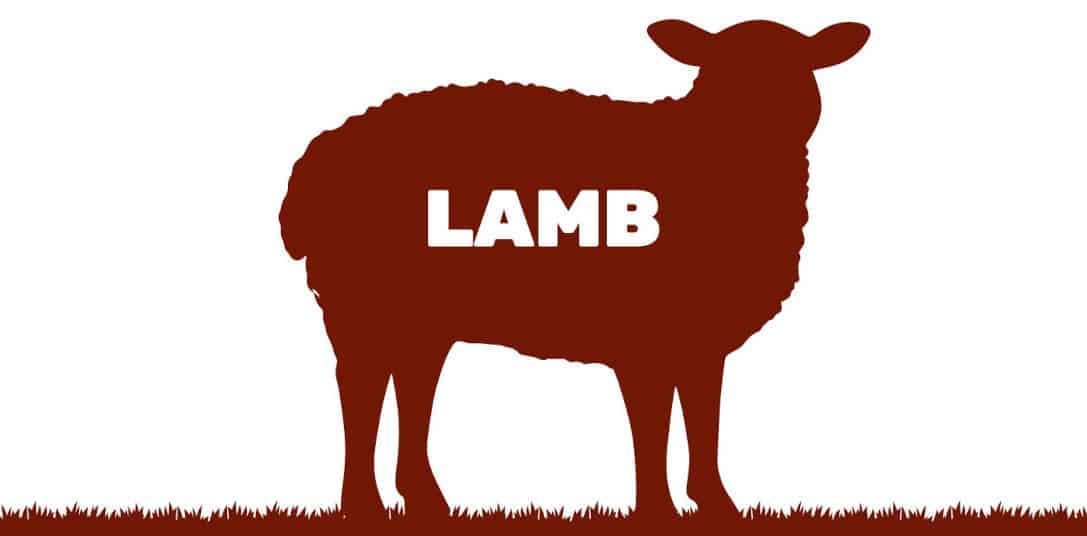
| Lamb Cut | Smoker Temp | Finished Internal Temp | Time Required |
|---|---|---|---|
| Leg | 225 – 250 °F | 145F | 3 – 4 hours |
| Shoulder | 250 – 300 °F | 195 – 205 °F | 5 – 6 hours |
| Rack | 225 – 250 °F | 135 – 140 °F | 1 – 1.5 hours |
| Chops | 225 – 250 °F | 135 – 140 °F | 45 – 75 mins |
| Shank | 225 – 250 °F | 195 – 205 °F | 4 – 5 hours |
Most lamb, mercifully, is cooked safely at medium doneness, at about 145 °F.
You can take it higher if you want, though I don't know why you would?! But, if that's your thing, go to between 145 °F and 155 °F for medium to medium-well. Higher, and it takes away some quality in my opinion.
Smaller cuts can be grilled beautifully in just minutes, but if you really like a smoky taste, go ahead and fire up the smoker. However, lamb takes on smoke very easily, and it's easy to over — smoke. So use only a little!
Some cuts, though, such as the shoulder and shank, are great for pulling. For these you want to smoke them until they are almost falling apart at around 200 °F.
Leg
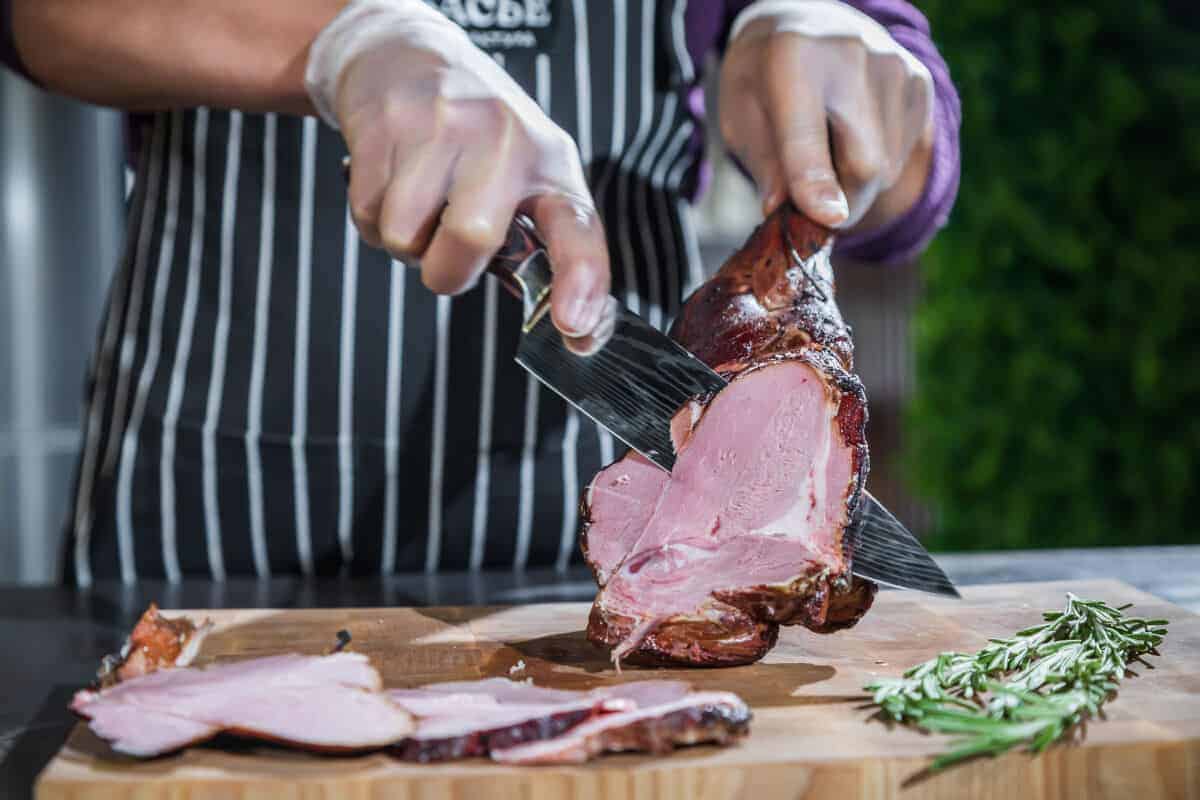
| Smoker Temp | Finished Internal Temp | Time required |
|---|---|---|
| 225 – 250 °F | 145 °F | 3 – 4 hours |
For the ultimate leg of lamb, smoke it for 3 to 4 hours until it hits between 130 and 135 °F, then remove from the smoker. Then broil or blast it with high heat over 450 °F to sear the outside and add an incredible, flavorful crust.
Shoulder
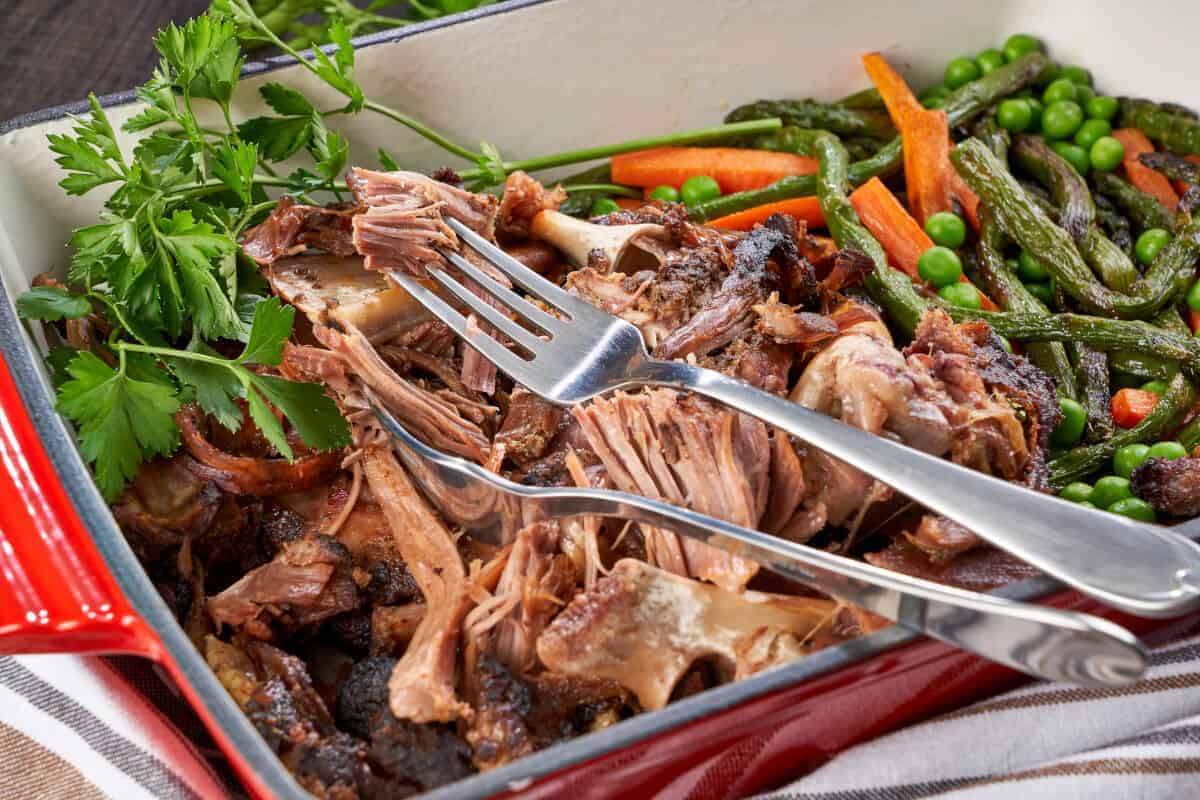
| Smoker Temp | Finished Internal Temp | Time required |
|---|---|---|
| 250 – 300 °F | 195 – 205 °F | 5 – 6 hours |
Lamb shoulder can be served sliced, but if that's your goal, I suggest a leg instead. It's just better.
However, for pulled lamb, the shoulder is the choice…and it's fantastic!
Smoke it until when probed the meat offers no resistance, showing it's tender throughout. Then rest for 30 to 45 minutes before shredding.
Great in rolls, pita bread, or on a bed of couscous with pomegranate and salad.
Rack
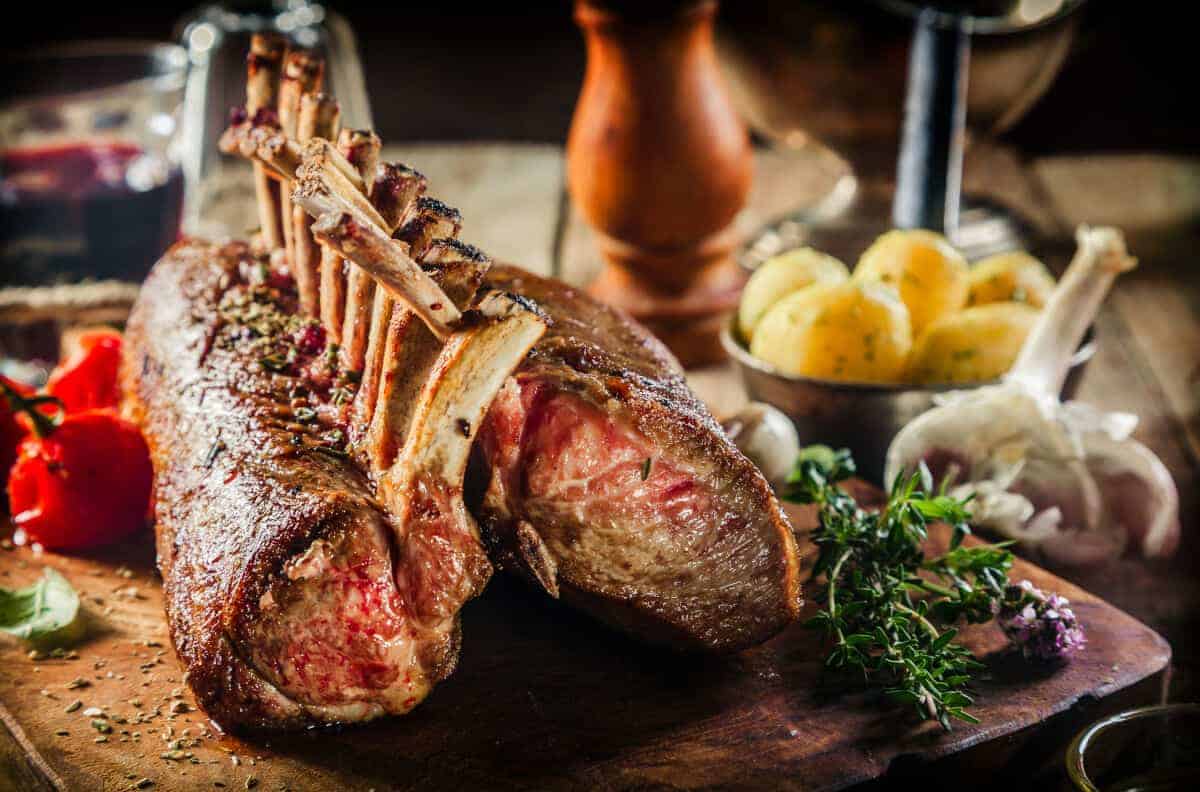
| Smoker Temp | Finished Internal Temp | Time required |
|---|---|---|
| 225 – 250 °F | 135 – 140 °F | 1 – 1.5 hours |
I'm not one to tell people how to eat their meat…actually, I am. I guess that's what this website is about? So…
Do not smoke your rack of lamb past a finished temp of 140 °F, including resting and carryover cooking. It can get quite tough and takes away some of the quality you've paid for with this cut.
Chops
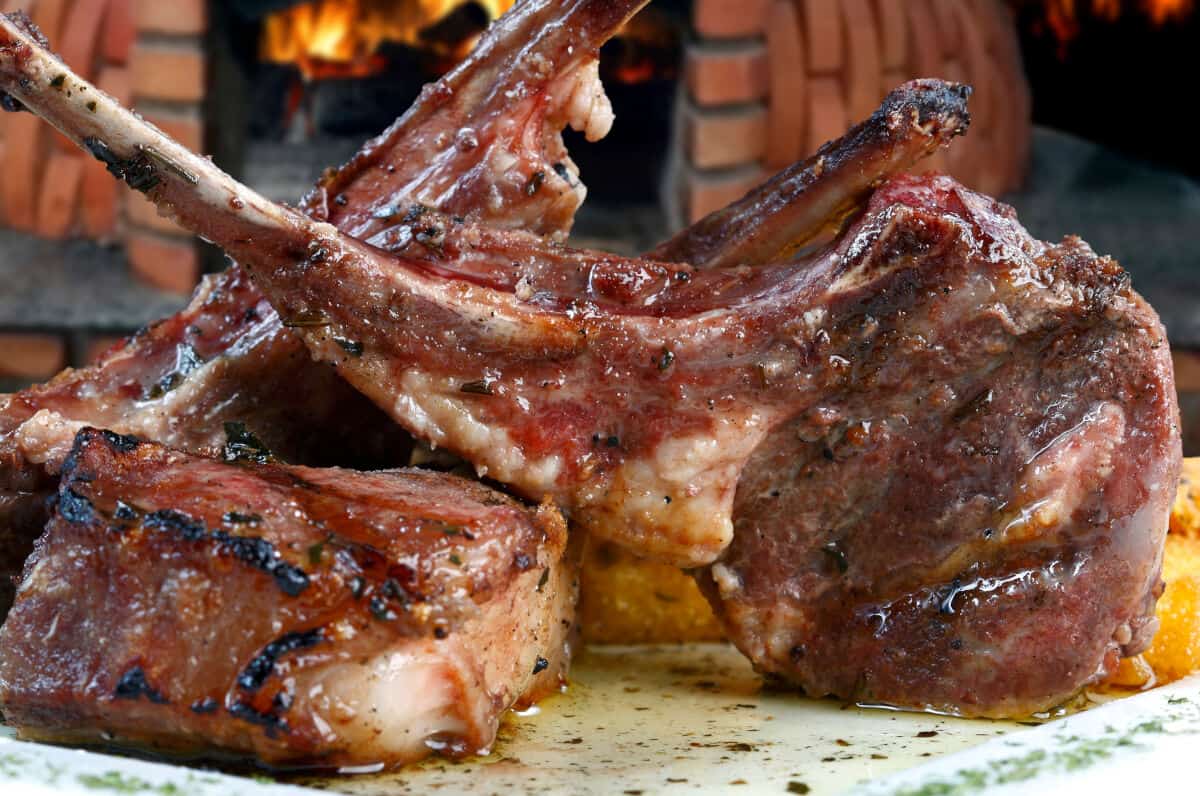
| Smoker Temp | Finished Internal Temp | Time required |
|---|---|---|
| 225 – 250 °F | 135 – 140 °F | 45 – 75 mins |
Lamb chops aren't a common choice for the smoker, but they can be done. Some may prefer to take them out early and finish with a sear on the grill.
I certainly do this as any chance to add flavor should be taken advantage of.
Shank
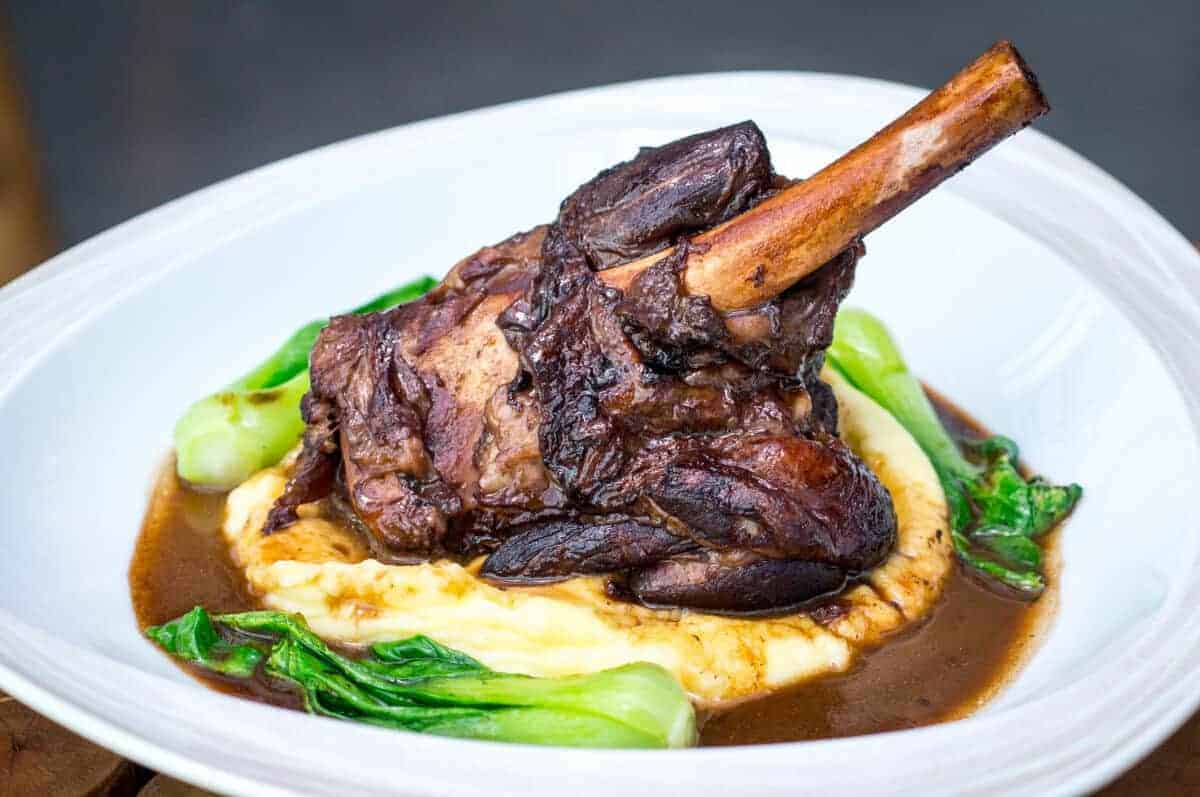
| Smoker Temp | Finished Internal Temp | Time required |
|---|---|---|
| 225 – 250 °F | 195 – 205 °F | 4 – 5 hours |
You can smoke a lamb shank all the way through to the finished serving temperature, but I prefer to smoke and then braise them. Smoked alone is great, but can be a little dry, whereas smoked then braised is another level of flavor and moistness, and is FANTASTIC!
So I recommend smoking for a good 3 hours, then braising in a mix of stock, dark beer, and herbs until they come to the target temp of 195 to 205 °F, and when they are just falling apart.
Poultry Smoking Times and Temperatures
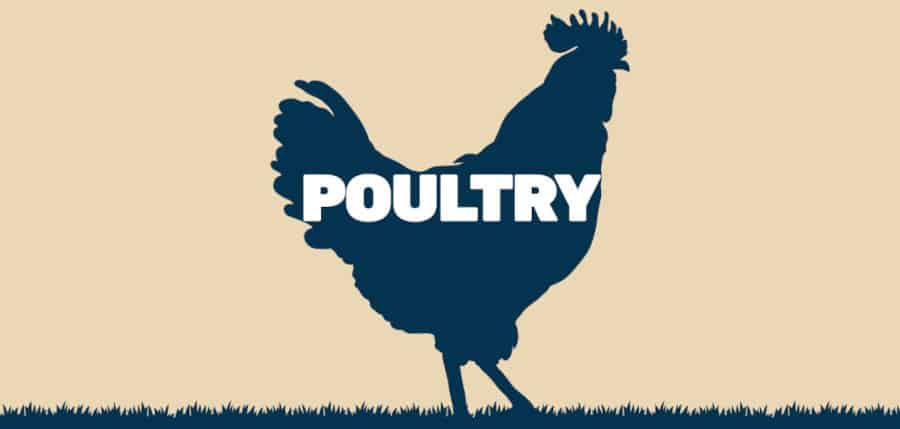
| Poultry Cut | Smoker Temp | Finished Internal Temp | Time Required |
|---|---|---|---|
| Whole Chicken | 275 – 350 °F | 165 – 170 °F | 2 – 3 hours |
| Chicken Breasts | 275 – 350 °F | 165 °F | 1 – 1.5 hours |
| Chicken Legs | 275 – 350 °F | 170 – 180 °F | 1.5 – 2 hours |
| Chicken Drumsticks | 275 – 350 °F | 170 – 180 °F | 1.5 – 2 hours |
| Chicken Wings | 275 – 350 °F | 170 – 180 °F | 1 – 1.5 hours |
| Whole Turkey | 250 – 300 °F | 165 °F | 15 – 25 mins/lb, 3 – 6 hours |
| Turkey Breast | 275 – 325 °F | 165 °F | 2.5 – 4 hours |
| Turkey Drumsticks | 300 – 350 °F | 165 °F | 2 – 3 hours |
| Whole Duck | 275 – 300 °F | 165 °F | 2.5 – 3.5 hours |
| Cornish Hen | 225 – 250 °F | 165 °F | 1.5 – 2.5 hours |
A lot of attention is given to grilling hoofed mammals, but let us not forget our feathered friends!
From whole turkey for holidays to smoky drumsticks anytime, grilling and smoking are great ways to cook up a bird.
Various "safe" temperatures are provided for cooking chicken:
- The USDA tells us that all poultry products are safe when cooked to a minimum temperature of 165 °F.
- In the U.K., the government says to go to 180 °F.
- Canadian guidelines go both ways (of course they do) — 165 °F for poultry cuts, and 180 °F for whole birds.
The danger with poultry is salmonella.
According to statistics from the Center for Disease Control, Salmonella causes a million illnesses a year in the U.S. Alone, all thanks to contaminated food.
That's second only to the Norovirus among all food – borne pathogens. And though Norovirus occurs five times as frequently as salmonella, more people are hospitalized, and more people die from salmonella every year.
So please, do follow the guidelines of taking all poultry to at least 165 degrees Fahrenheit internal.
Chickens come in many different sizes, so of course, your cooking times will vary accordingly. Just make sure you nail that temperature!
In this poultry time and temperatures chart, the temp of the smoker varies from cut to cut, so do make sure to read the info presented properly.
Whole Chicken
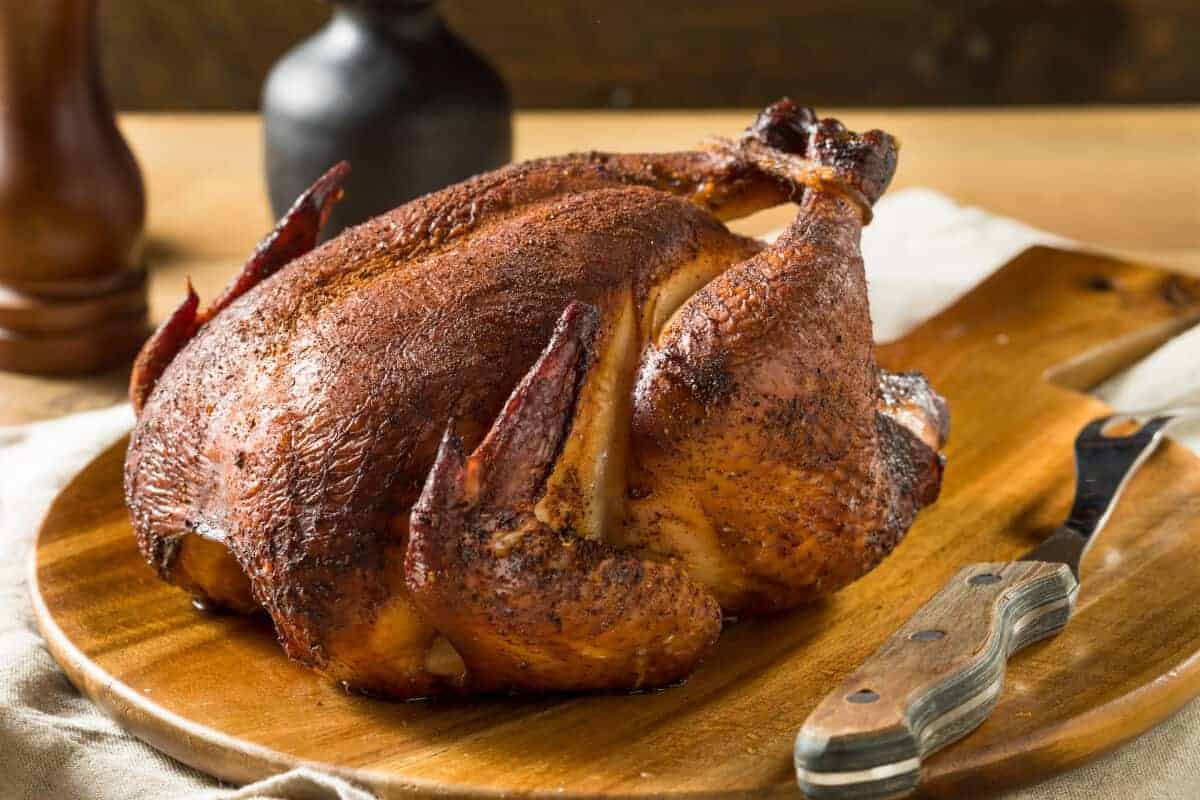
| Smoker Temp | Finished Internal Temp | Time required |
|---|---|---|
| 275 – 350 °F | 165 – 170 °F | 2 – 3 hours |
The generally accepted 'low n slow' smoking temperature is 225 °F. However, if you cook 'skin on chicken' at this temp, the skin becomes rubbery, and a bit gross, and the chicken tends to dry out as it's cooking for too long.
So, for chicken, we set our smoker temperature to 275 °F minimum.
For me, the best results come when I smoke chicken closer to a pit temp of 350 °F, because the meat tends to stay juicier with the quicker smoking time and the skin has a chance to crisp. However, there is less time for a smoky flavor to develop.
So if a more robust smoke flavor is your goal, then down closer to 275 °F pit temp will be right for you … But now lower!
Chicken Breasts
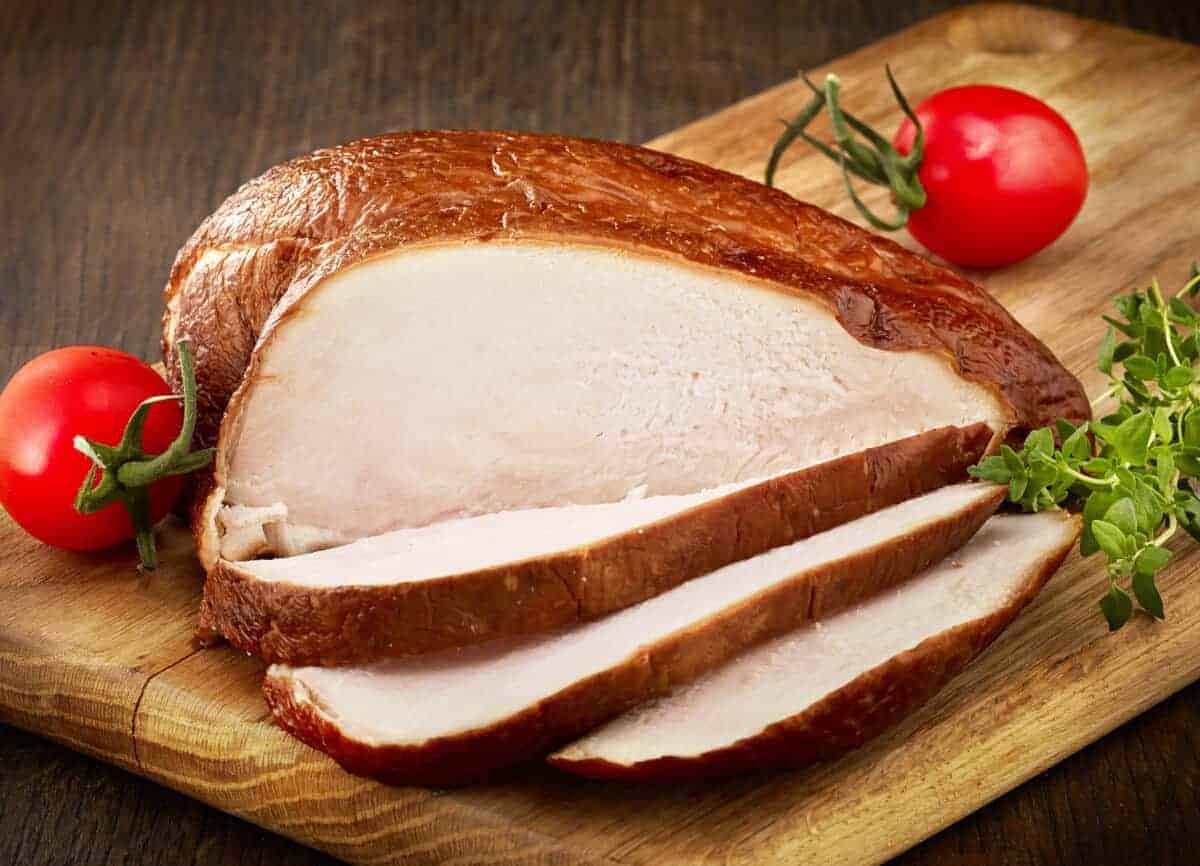
| Smoker Temp | Finished Internal Temp | Time required |
|---|---|---|
| 275 – 350 °F | 165 °F | 1 – 1.5 hours |
As we all know too well, chicken breast tends to dry out if not cooked correctly, so you really do want to monitor and nail the temps here!
If skinless, smoke at 275 °F, if 'skin on' then smoke closer to 350 °F to crisp it.
And with breast, remove the meat from the smoker when it hits approximately 160 °F and not a degree over! Then rest in foil for a good 5 minutes+, and the internal temperature will rise to 165 °F or more, at which point you can serve it.
If you leave it on the smoker until 165 °F internal is hit, it will rise up past 170 °F while resting and can dry out a little.
Chicken Legs
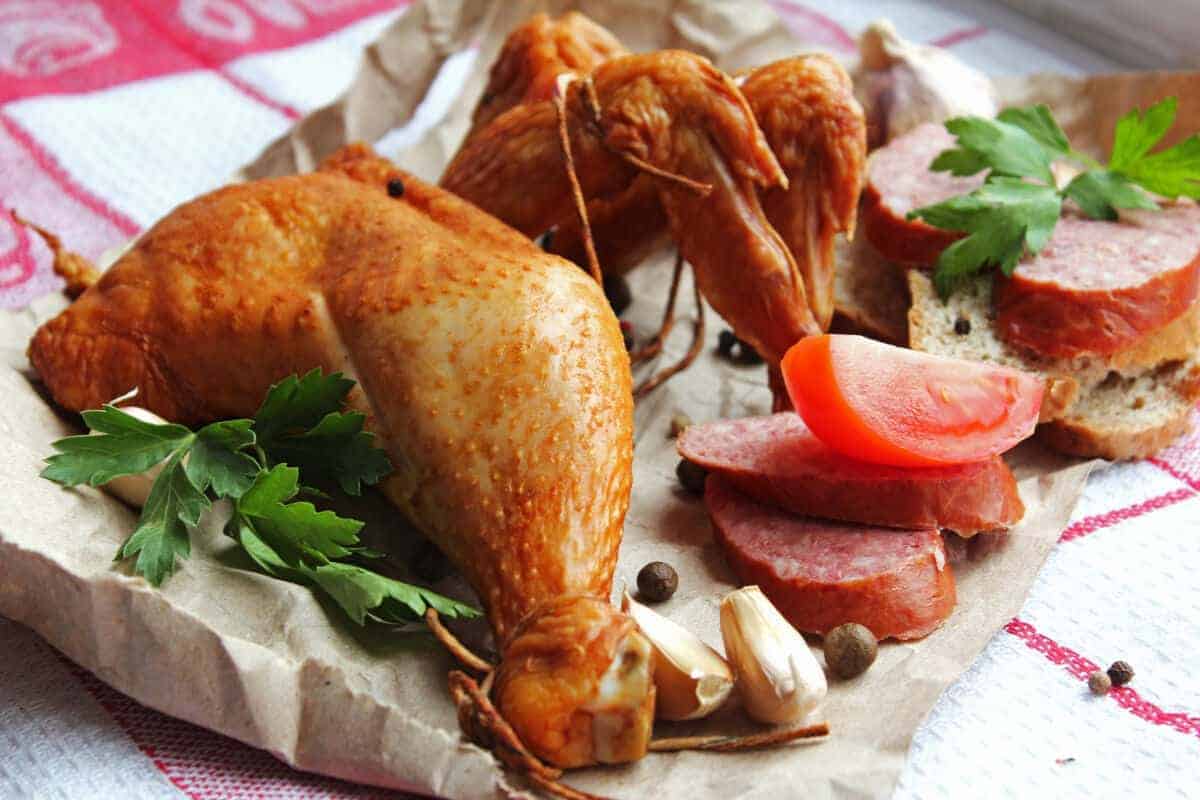
| Smoker Temp | Finished Internal Temp | Time required |
|---|---|---|
| 275 – 350 °F | 170 – 180 °F | 1.5 – 2 hours |
Compared to the white meat of breast, you want to take the darker meat of legs to a higher internal temperature, help to render out the fat and connective tissues, and crisp the skin more.
So for legs, aim for an internal temp of approximately 175 °F for best results.
Chicken Drumsticks
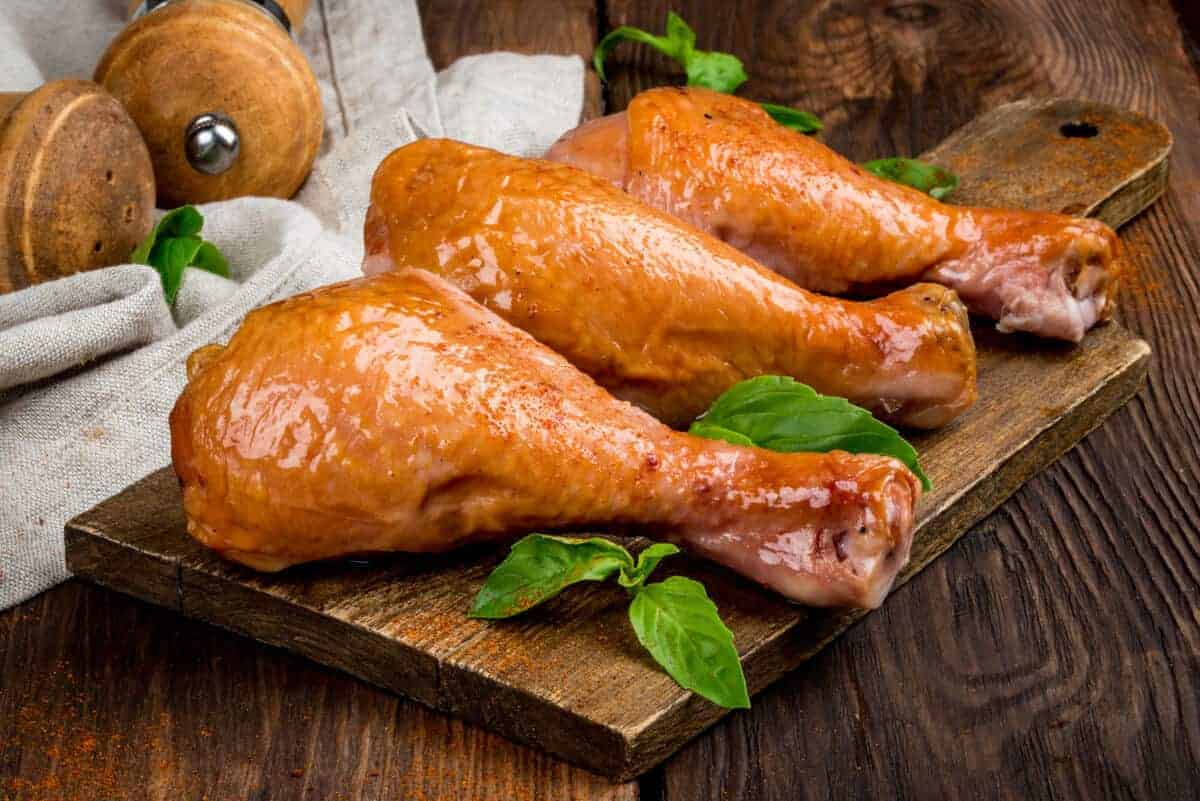
| Smoker Temp | Finished Internal Temp | Time required |
|---|---|---|
| 275 – 350 °F | 170 – 180 °F | 1.5 – 2 hours |
Similarly to the leg (because a drumstick is part of the leg!), you want to take this darker meat to an internal temp of approximately 175 °F for the best results.
Chicken Wings
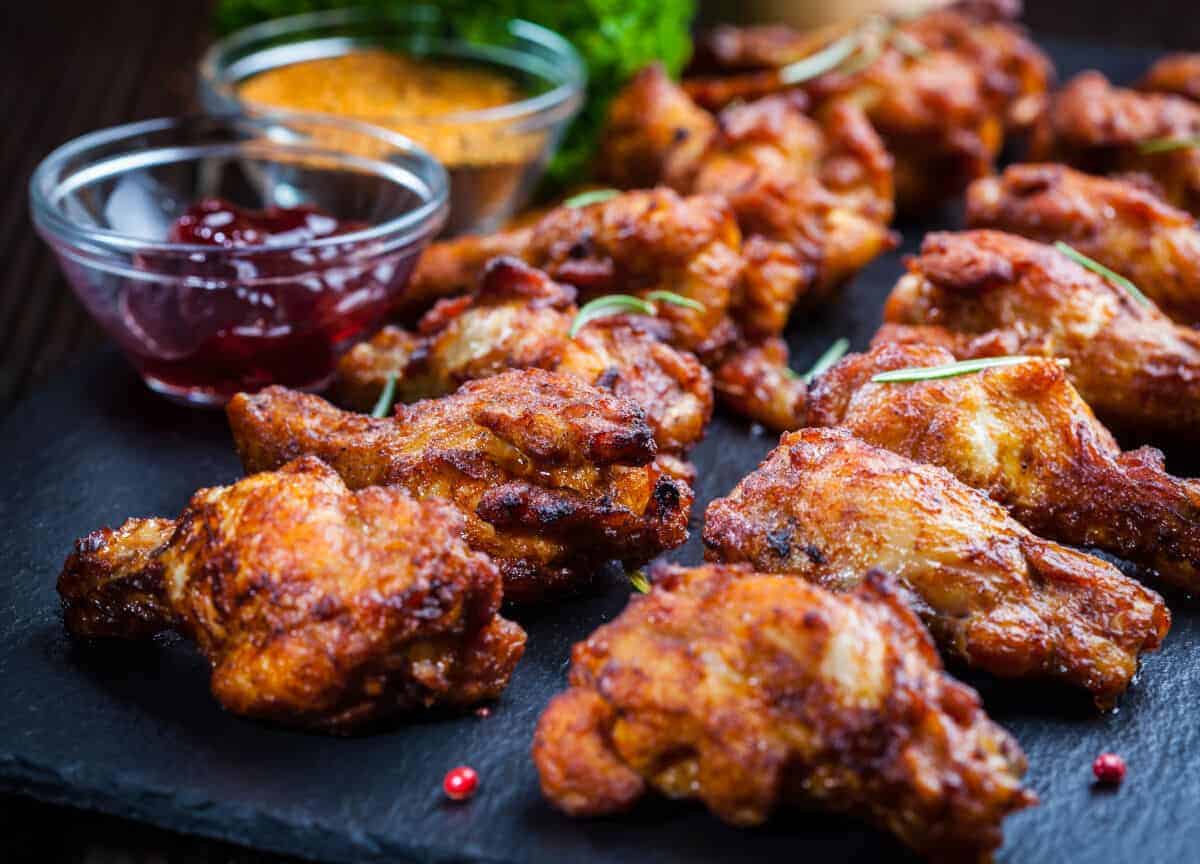
| Smoker Temp | Finished Internal Temp | Time required |
|---|---|---|
| 275 – 350 °F | 170 – 180 °F | 1 – 1.5 hours |
The best chicken wings have a smoke infused flavor, but textured crispy skin, and unfortunately that's not going to happen at the low temperatures of traditional smoking alone.
So to get the best wings: Smoke them between 275 and 350 °F for a good 45 minutes, then hit them with some 450 °F+ heat by turning up your smoker temperature, or moving them to a grill or your oven, until they hit approx. 170 °F, so they rise to 175 °F to 180 °F while resting.
You can smoke them the whole way through at a lower temp, but you just won't get that fantastic crispy skin.
Turkey — Whole
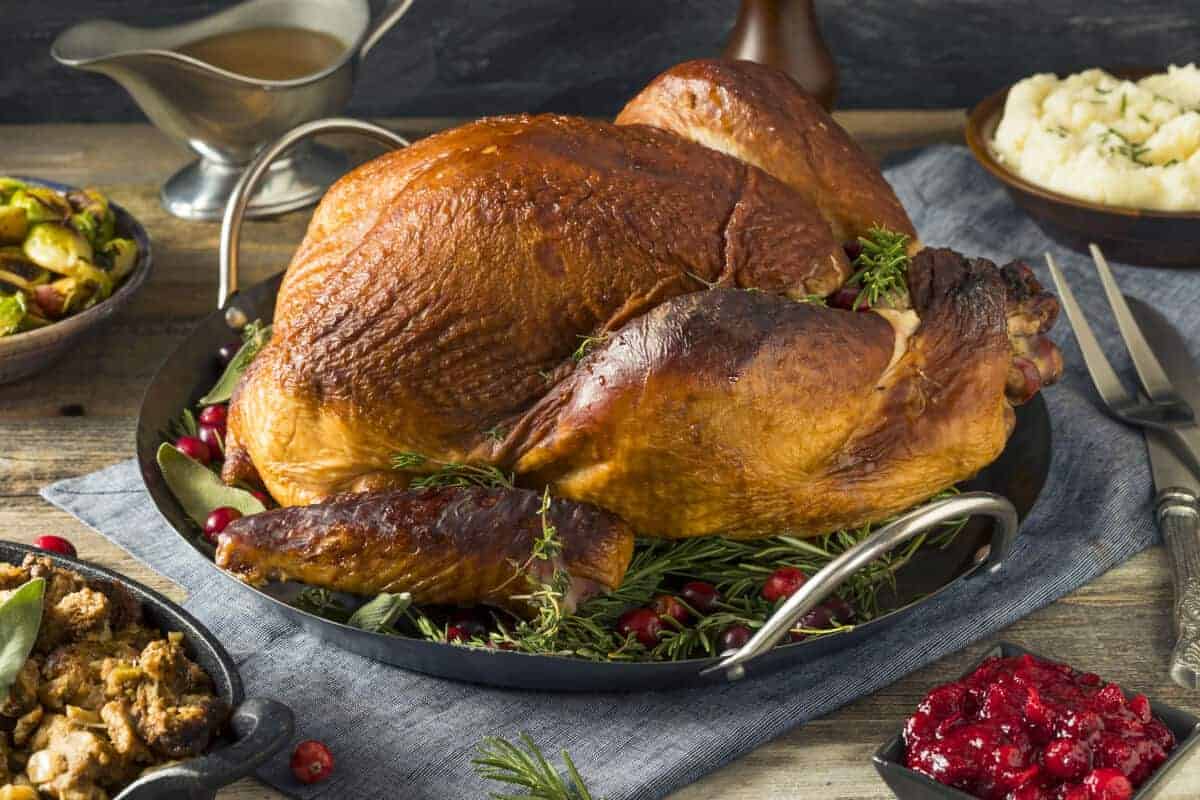
| Smoker Temp | Finished Internal Temp | Time required |
|---|---|---|
| 250 – 300 °F | 165 °F | 15 – 25 mins/lb, 3 – 6 hours |
When smoking a whole Turkey, it's recommended to only do a bird that weighs 13 to 14 pounds or less total. This is because if larger, it will take so long to cook, that it sits in the food danger zone for too long where bacteria grow and can result in disaster.
If you have a bird over 14 pounds, it's best to spatchcock it and cook it flat, or to butcher it into smaller pieces.
So…here we go again with the seemingly unhelpful wide ranges! 15 to 25 minutes per-pound, and 3 to 6 hours to cook? Let me explain:
A decent sized turkey can weigh anything from 6 to 14 pounds for smoking, and you can smoke it at anything from 250 °F up to 300 °F, so the time can vary wildly.
If smoking at 250 °F, you will need approximately 25 minutes per-pound. If smoking at 300 °F, you will need about 15 minutes per-pound.
So weigh your bird, choose your pit temp and multiply the two to get your average time. Make sure to keep your smoker temp stable, and then away you go!
Turkey Breast
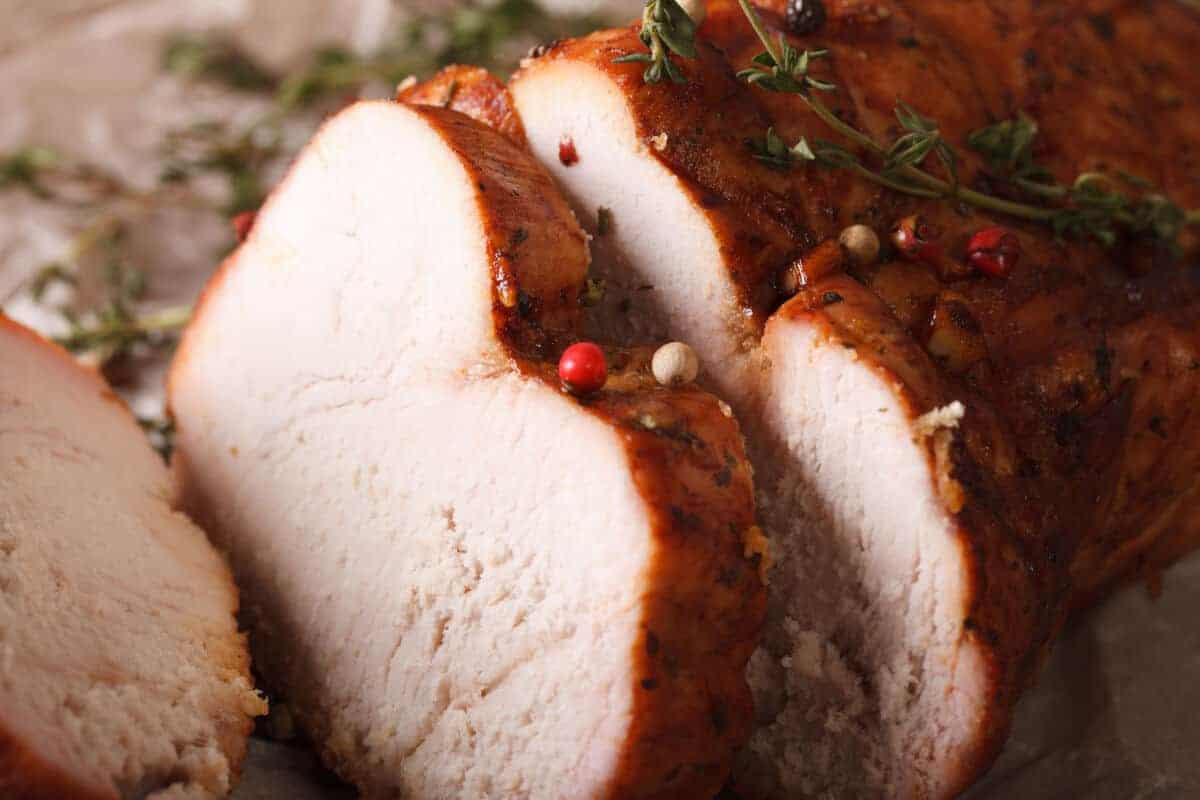
| Smoker Temp | Finished Internal Temp | Time required |
|---|---|---|
| 275 – 325 °F | 165 °F | 2.5 – 4 hours |
For Turkey breast smoking at around 300 °F, you're looking at about 25 minutes per-pound smoking time. A little more if at 275 °F, a little less if at 325 °F.
I strongly recommend wet brining your turkey breast before taking it to the smoker. This is the best way to end up with deliciously moist turkey breast, and avoid feeling like you've licked a carpet with every bite!
If you don't know how, then check out our guide to wet brining.
Turkey Drumsticks
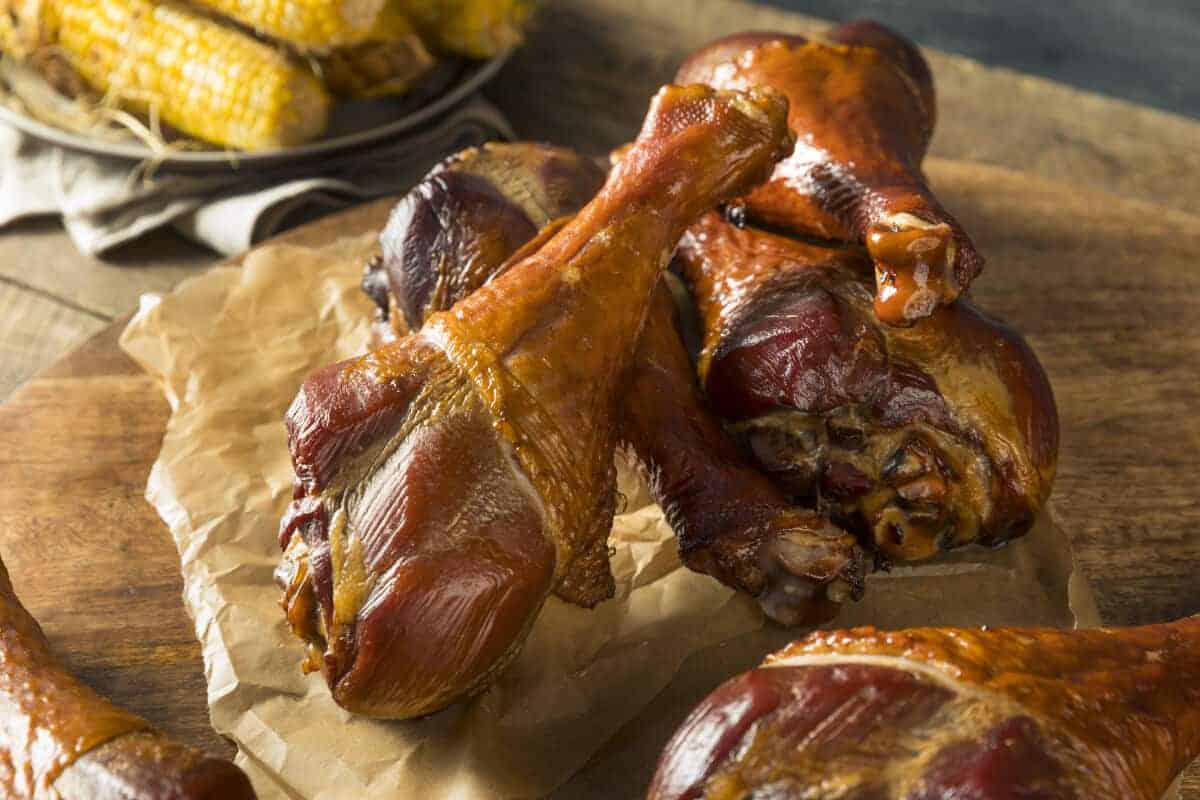
| Smoker Temp | Finished Internal Temp | Time required |
|---|---|---|
| 300 – 350 °F | 165 °F | 2 – 3 hours |
I recommend cooking turkey drumsticks at slightly higher temps than some others suggest. Turkey drumsticks can be enormous, and you want to be sure if they're cooked through to the center.
Plus, cooking to a higher temperature should leave the skin nice and crispy, but the inside tender and moist.
Duck — Whole
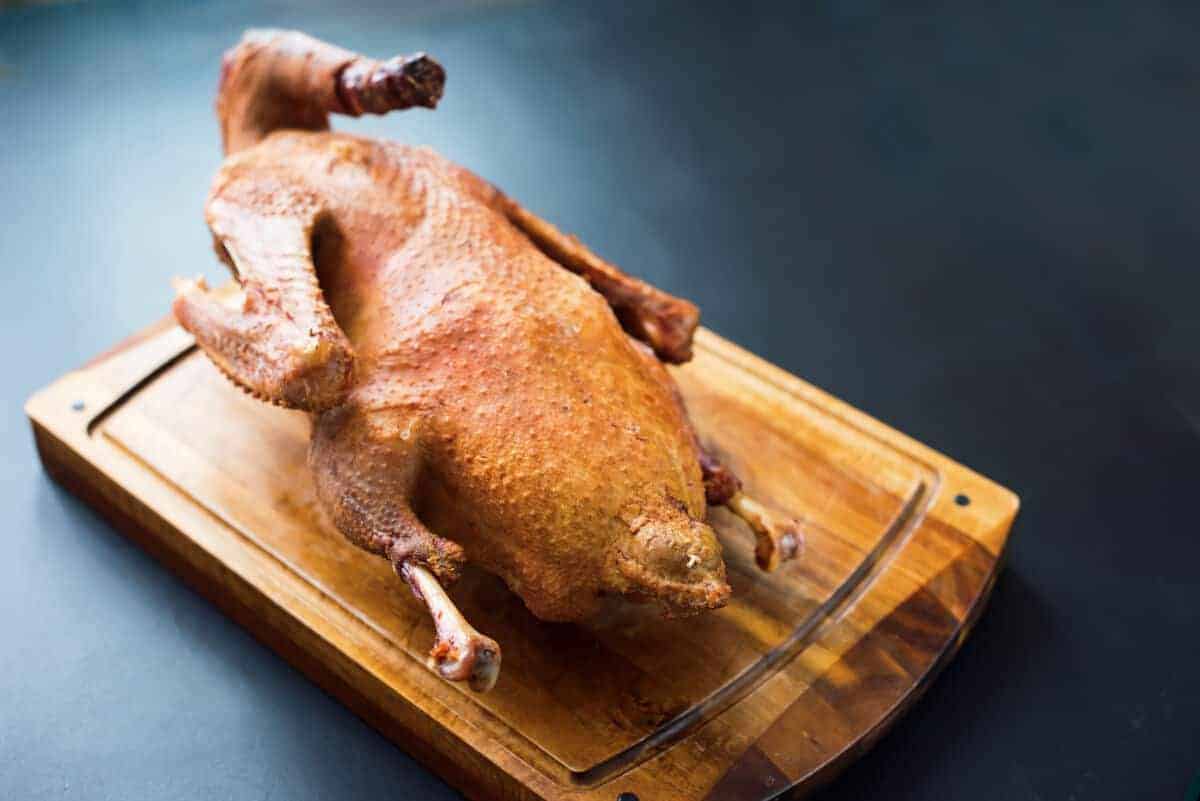
| Smoker Temp | Finished Internal Temp | Time required |
|---|---|---|
| 275 – 300 °F | 165 °F | 2.5 – 3.5 hours |
Once I again, I like to smoke my duck at higher temperatures of 275 to 300 °F, compared to many who suggest smoking at 225 °F.
The reason being, is that duck is VERY fatty, and the higher temperature tends to render out far more of the fat and results in crispier skin.
However, smoking a duck is not enough, in my opinion, if you want crispy skin…and crispy duck skin is divine, so you should strive for it at all costs!
So take it off the smoker a good 10 degrees Fahrenheit before your target temperature (remove at 155 °F) and then grill or broil it all over to really crisp up the skin and bring it up to the finished temp of 165 °F.
Cornish Hen
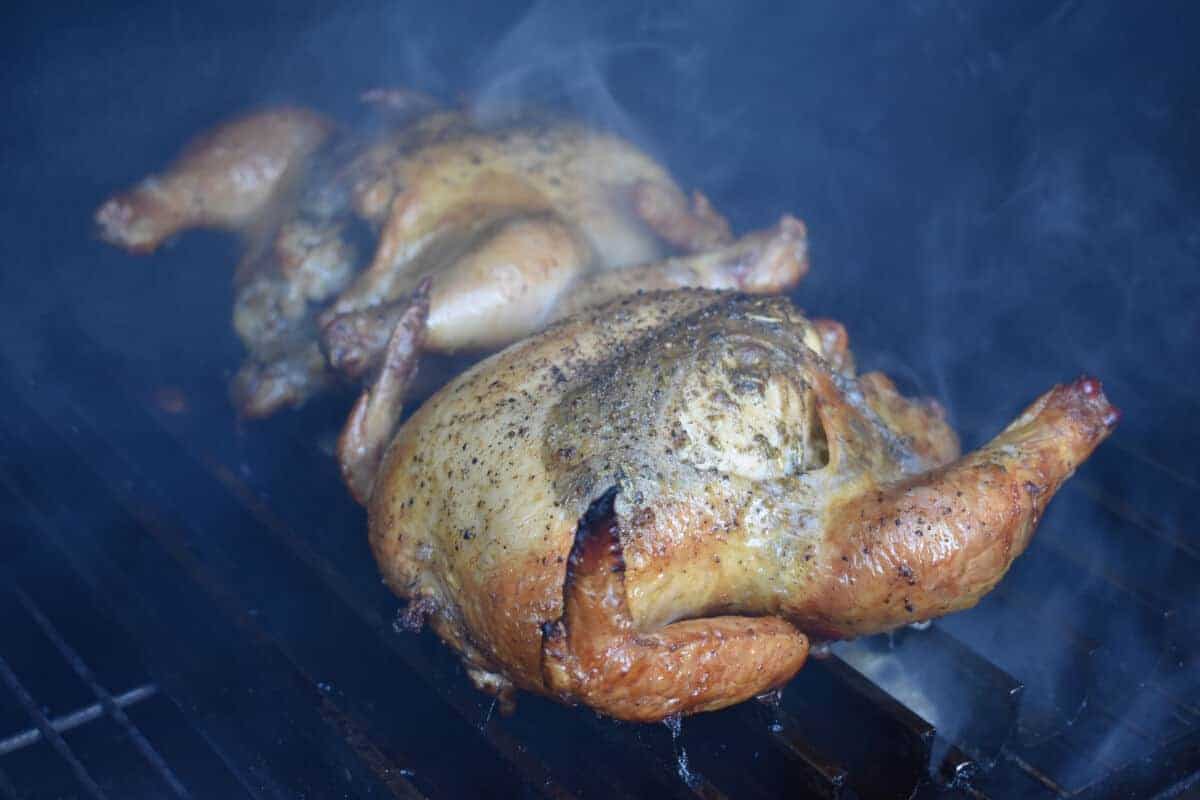
| Smoker Temp | Finished Internal Temp | Time required |
|---|---|---|
| 225 – 250 °F | 165 °F | 1.5 – 2.5 hours |
Cornish hen tastes a little gamey, a bit strong, but in a good way! Kind of like a 'chicken concentrate.'
Not much to say here, except to smoke and enjoy!
Seafood and Fish Smoking Times and Temperatures
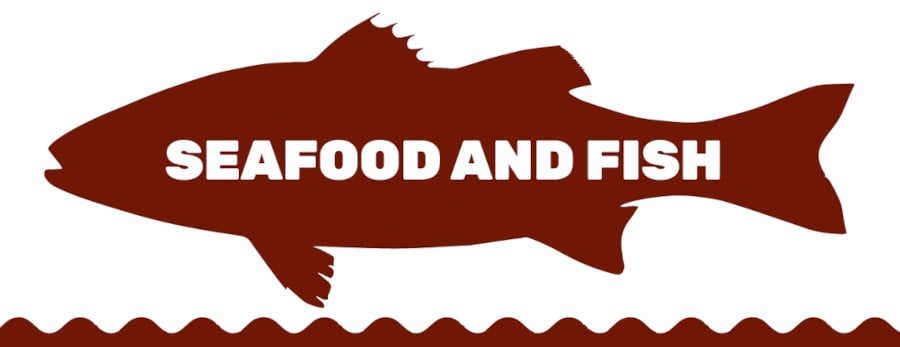
| Smoker Temp | Finished Internal Temp | Time Required | |
|---|---|---|---|
| Salmon — Whole | 225 °F | 145 °F | 2 – 4 hours |
| Salmon — Filet | 225 °F | 145 °F | 1 – 1.5 hours |
| Trout — Whole | 225 °F | 145 °F | 1.5 – 3 hours |
| Trout — Filet | 225 °F | 145 °F | 45 – 75 mins. |
| Tilapia Filet | 225 °F | 145 °F | 1 – 1.5 hours |
| Lobster Tails | 225 °F | 145 °F | 45 – 60 mins |
| Shrimp | 225 °F | 145 °F | 20 – 30 mins |
| Oysters | 200–225 °F | 145 °F | 30 – 45 mins |
| Scallops | 200–225 °F | 1145 °F | 45 – 60 mins |
You might think that seafood is perfectly OK to eat raw. After all, people go for all-you-can-eat sushi regularly, and they live to tell the tale!
However, while many kinds of seafood are fine when eaten raw, there are possible dangers.
Seafood has to be handled very carefully after it's caught — many fish and shellfish begin to deteriorate quickly after they're dead, and they can become hosts to parasites and bacteria.
Besides, this is a barbecue site, not a raw food site! Grilled and smoked seafood is a treat and a nice departure from the usual barbecue fare.
It's safest to cook your seafood to an internal temperature of 145 °F. However, there are plenty of reputable chefs and cooking resources that suggest lower temperatures for improved flavor.
If the fish or shellfish was packed and stored properly, lower temperatures should be fine.
To learn more about selecting, storing, and cooking seafood, check out this comprehensive resource from the U.S. Food and Drug Administration.
Salmon — Whole
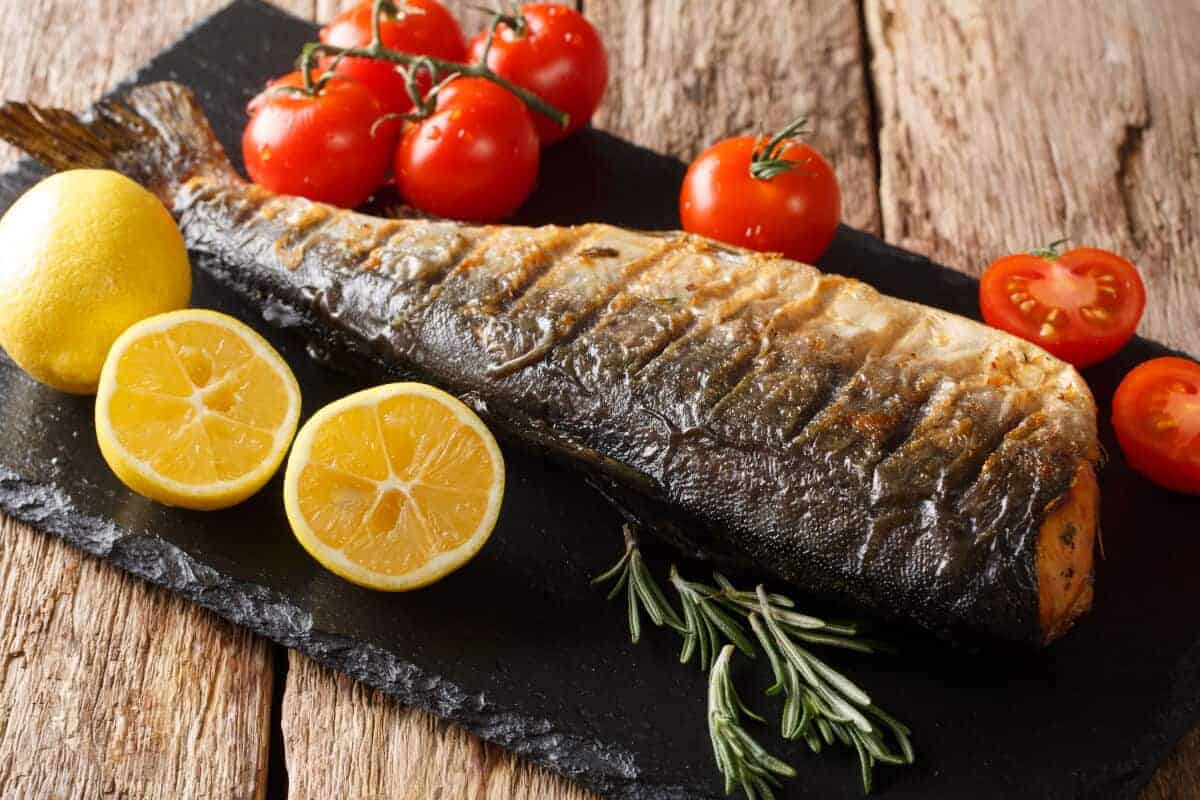
| Smoker Temp | Finished Internal Temp | Time required |
|---|---|---|
| 225 °F | 145 °F | 2 – 4 hours |
Salmon loses its moisture rapidly, so keep a close watch and don't overcook it!
It's ready when it 'starts to flake,' at approx 145 °F. Go much over that temp, and it can become dry quite quickly.
Salmon — Filet
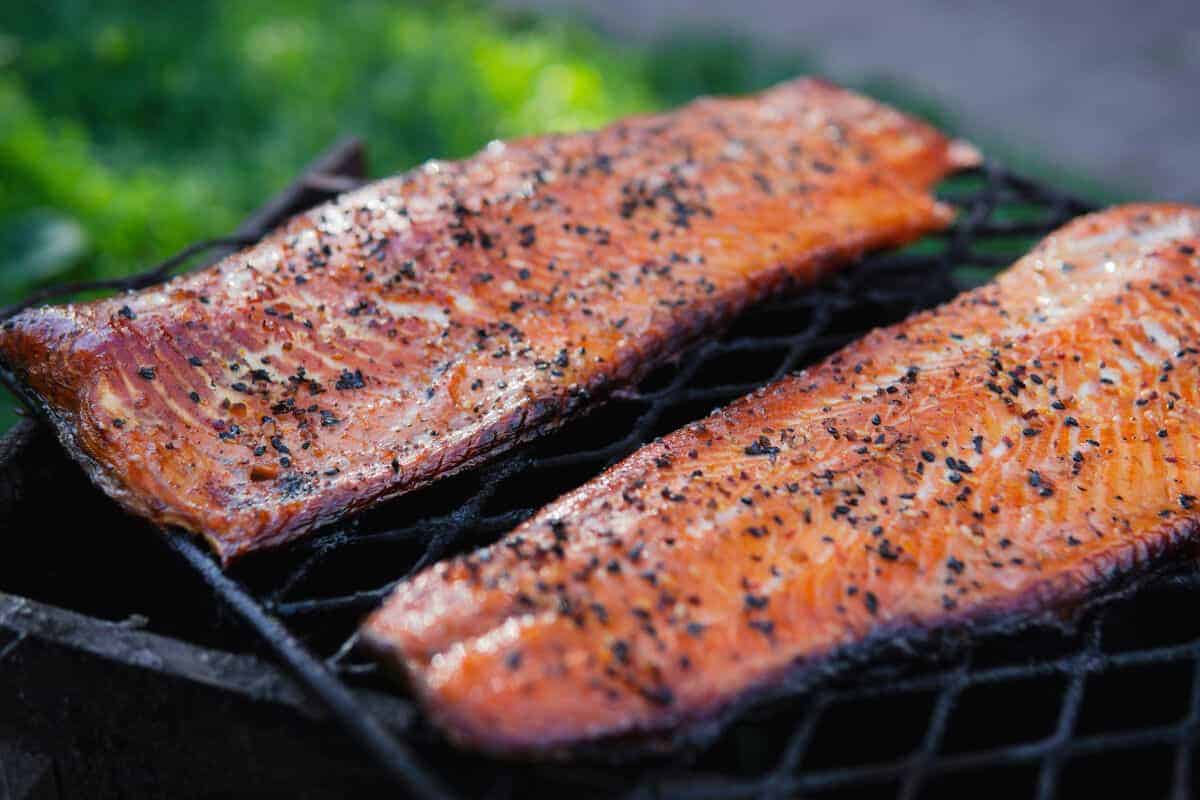
| Smoker Temp | Finished Internal Temp | Time required |
|---|---|---|
| 225 °F | 145 °F | 1 – 1.5 hours |
How long it takes to smoke will vary significantly with the thickness of the cut.
And once again, do make sure not to overcook it, as it will dry out and not be as pleasurable to eat as it could and should be.
Trout — Whole
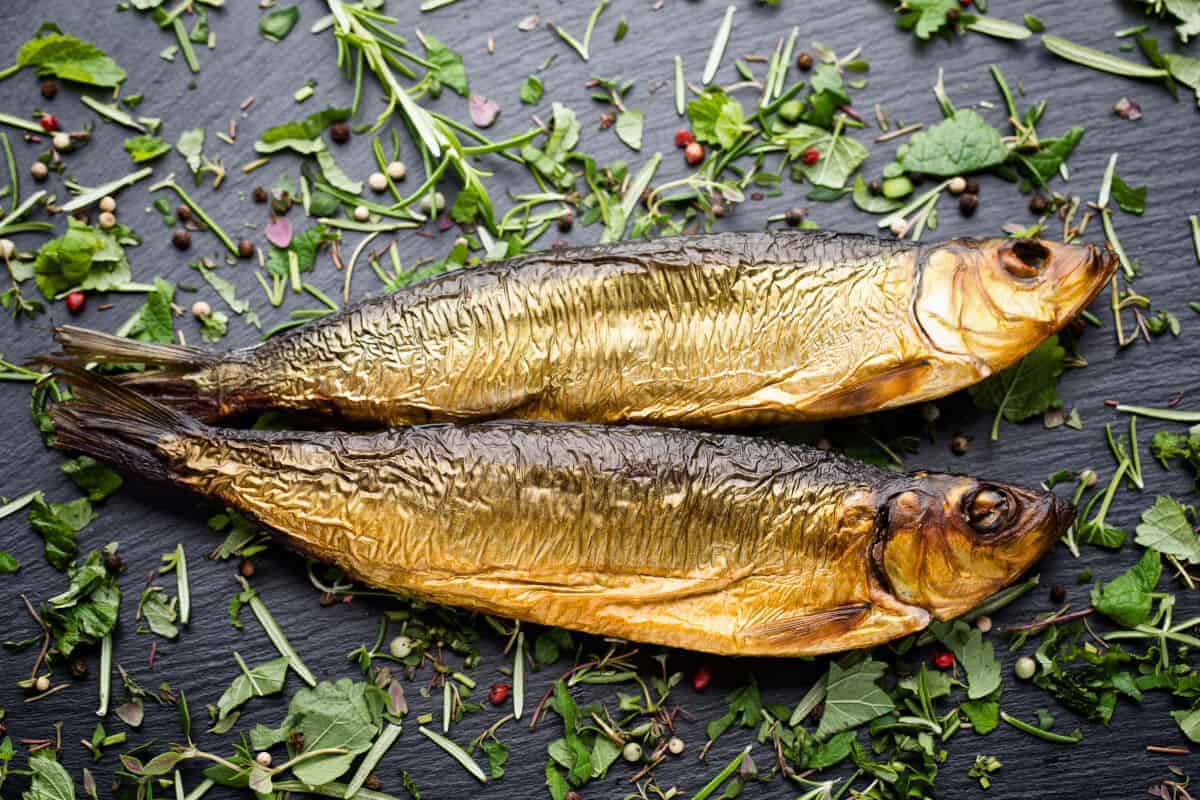
| Smoker Temp | Finished Internal Temp | Time required |
|---|---|---|
| 225 °F | 145 °F | 1.5 – 3 hours |
Trout is particularly wonderful on the grill or smoker.
How long you smoke it will depend on the size and thickness of the fish, which can vary a lot. If the skin is on, leave it there; you can eat it, and it will crisp up nicely.
Just remember that fish skin reflects heat; if you take the skin off, reduce your cooking time.
Trout — Filet
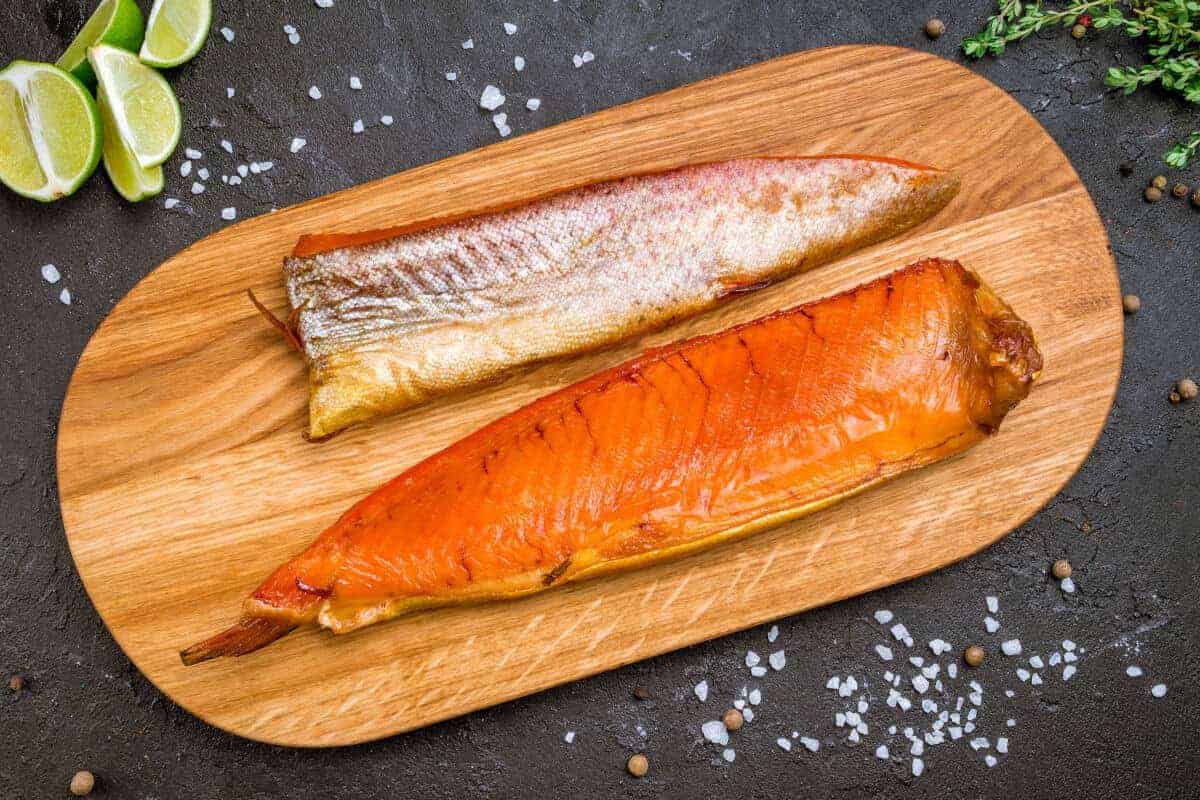
| Smoker Temp | Finished Internal Temp | Time required |
|---|---|---|
| 225 °F | 145 °F | 45 – 75 mins. |
Try brining your trout filet in a simple salt and sugar solution before smoking, to add sweetness and moisture to the end product.
Smoking time will vary depending on thickness, and if you keep the skin on or off.
Tilapia Filet
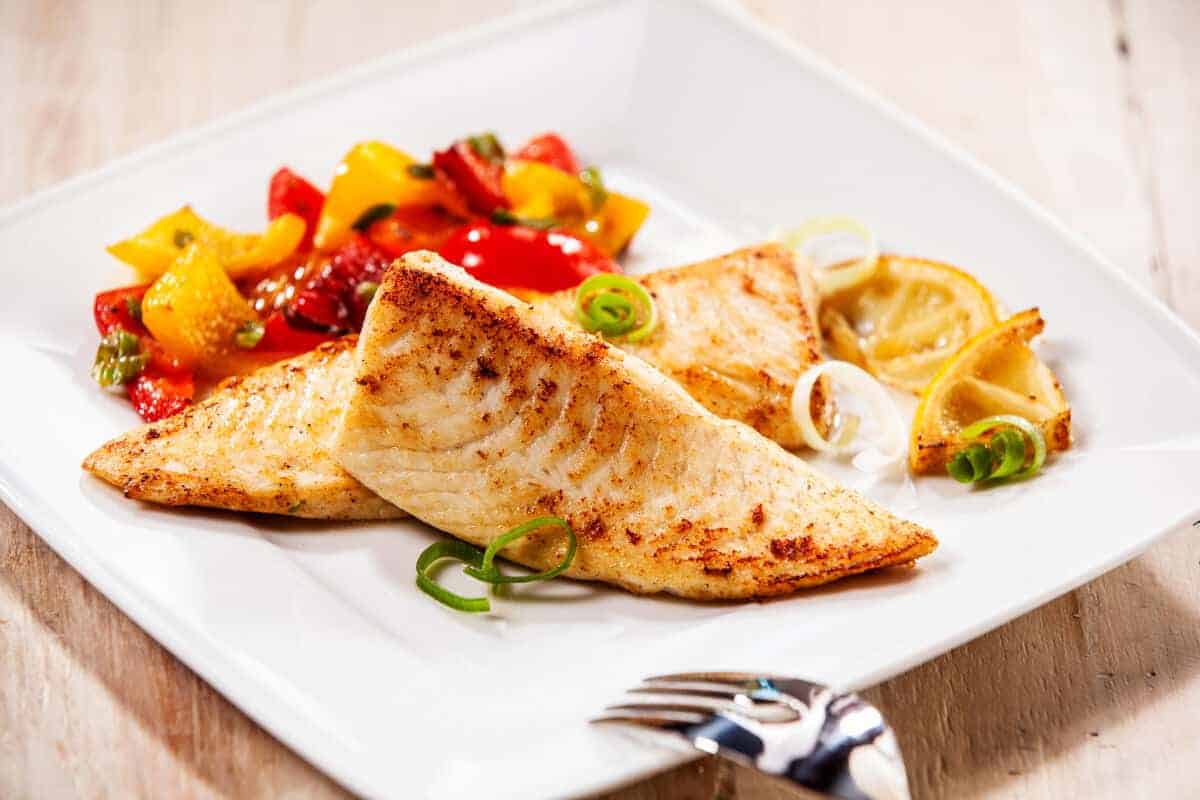
| Smoker Temp | Finished Internal Temp | Time required |
|---|---|---|
| 225 °F | 145 °F | 1 – 1.5 hours |
Tilapia is a very mild tasting fish, takes on smoke well, but will benefit from a flavored brine or marinade for a couple of hours before smoking.
Lobster Tails
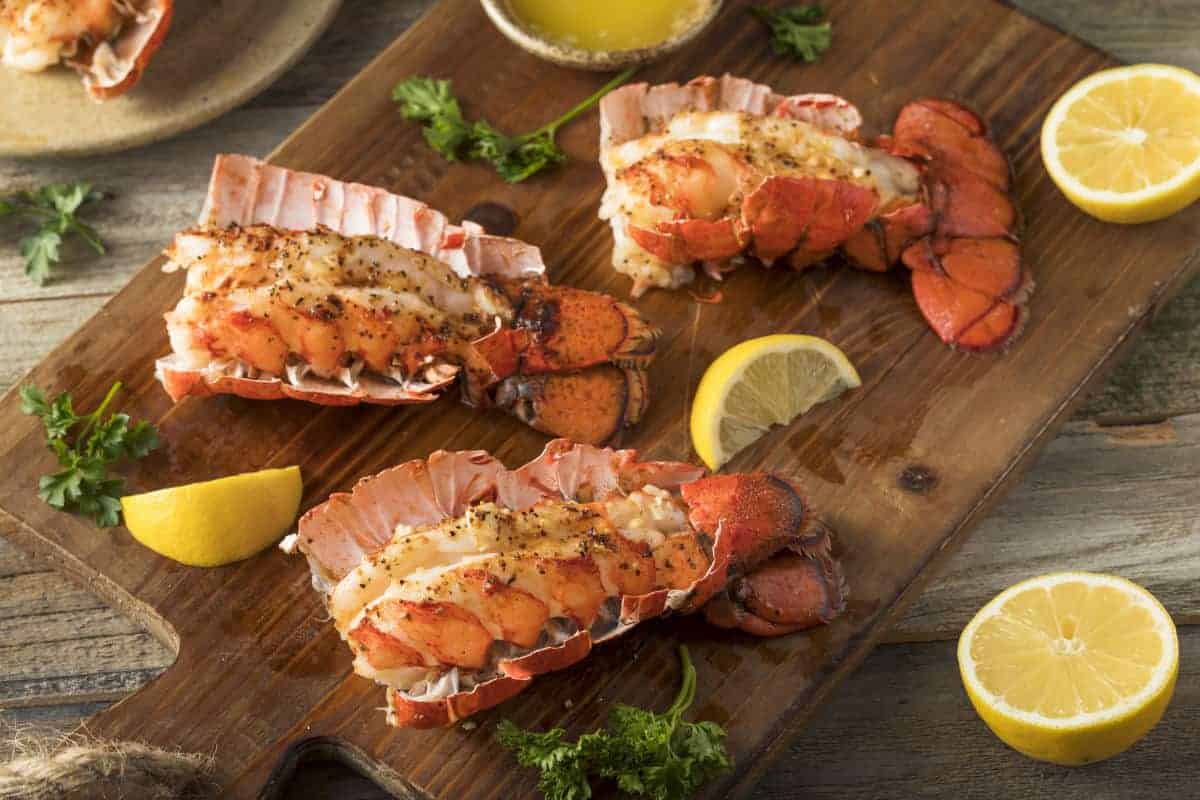
| Smoker Temp | Finished Internal Temp | Time required |
|---|---|---|
| 225 °F | 145 °F | 45 – 60 mins |
Lobster tails are absolutely fantastic when smoked…as long as you don't overcook them!
If you take them anything past 145 °F finished internal temperature, they can become a bit 'rubbery' in texture, which would be a sin! So monitor your temperatures closely.
If you buy them still in the shell, leave them in for a natural cooking container.
Note: Many people like their lobster tails smoked to between 135 and 140 °F. It's certainly more tender in this range.
In my opinion though, all fish and shellfish should be taken to 145 °F minimum to meet the USDA safety guidelines, just in case.
Shrimp

| Smoker Temp | Finished Internal Temp | Time required |
|---|---|---|
| 225 °F | 145 °F | 20 – 30 mins |
Shrimp are easy to overcook, and they dry up if you do so.
You can tell your shrimp are cooked when the shells turn bright pink, the flesh is white and opaque, and the internal temperature is up at 145 °F.
Do watch temperatures closely, as you do not want to go much beyond 150 °F unless you like dry, chewy shrimp.
Oysters

| Smoker Temp | Finished Internal Temp | Time required |
|---|---|---|
| 200 – 225 °F | 145 °F | 30 – 45 mins |
The best way to smoke oysters is to shuck them, then smoke in one half of the shell.
It isn't easy to take the temperature of an oyster (or clam or mussel) as they are so small. So for this one, you'll have to use your eyes. They are ready when the edges begin to curl up.
However, if you wish to attempt taking an internal temp, 145 °F is the minimum to aim for.
Scallops
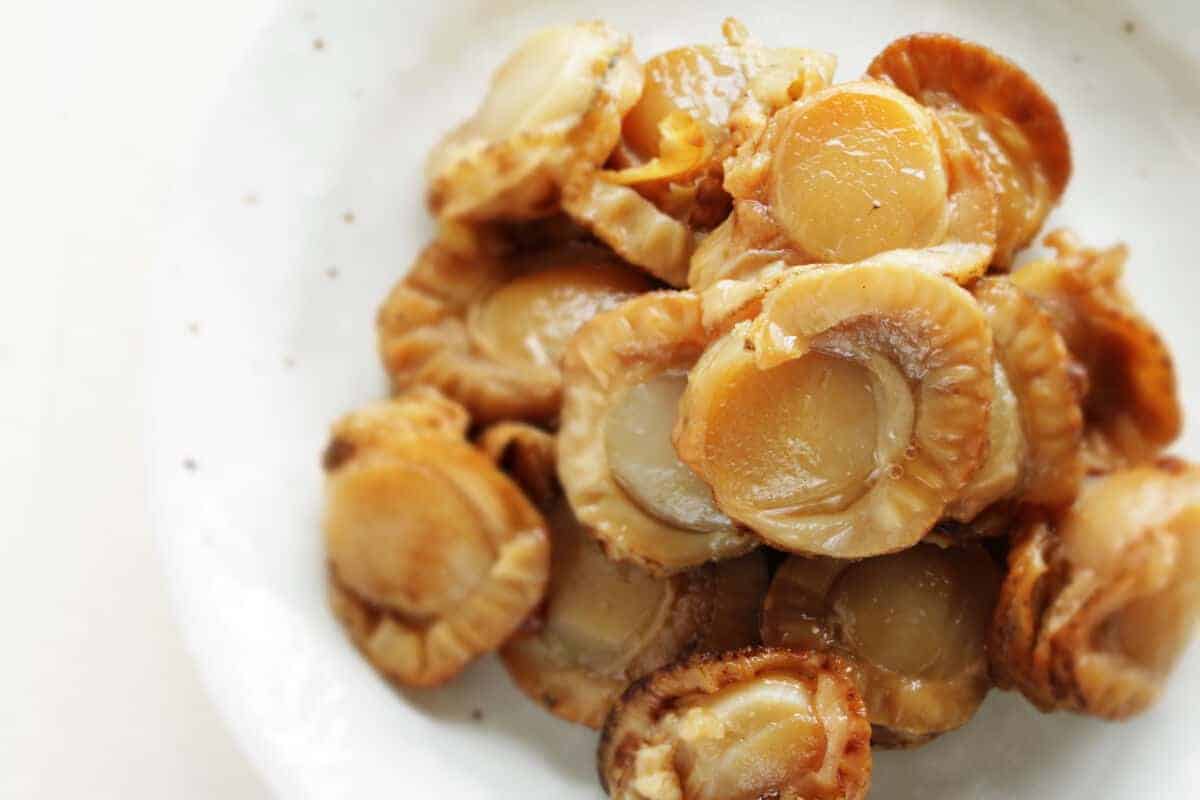
| Smoker Temp | Finished Internal Temp | Time required |
|---|---|---|
| 200 – 225 °F | 145 °F | 45 – 60 mins |
Scallops are fantastic smoked, but they are easy to overcook and ruin. So again, please monitor your temperatures closely, aim for 145 °F, and do not go past 150 °F finished internal temperature.
These Charts are Only a Guide
There's no single right temperature to have your smoker when it comes to barbecue, there's only personal preference and 'mostly agreed norms.' You can smoke at any temperature between 200 and 375 °F.
Many people prefer to smoke 'low n slow' at around 225 °F, while others prefer to smoke 'hot n fast' at closer to 375 °F. Both ways can produce excellent food, and one way isn't necessarily always better than the other.
Smoking lower for longer adds a stronger smoky flavor, and typically renders more fat and connective tissues, whereas smoking hotter results in a milder smoke taste, and food being ready to eat in a fraction of the time.
So please do see the above meat smoking charts as a mixture of being a guide only, what many people accept as best, and a sprinkling of my own personal preference.
As you become experienced, you can and almost certainly will vary from what you see above. That's fine, and I encourage it! But the smoking temperatures seen above are a good starting point for most.
Why My Smoking Time Estimates are Sometimes so Wide
It's impossible to give an accurate time for pieces of meat to smoke because we cook to a finished temperature, not a preset time, and many factors can affect how long a piece of meat will take to come up to the finished temp.
The size, thickness, cross-sectional area, and overall weight of any particular cut can vary wildly and will affect the smoking time.
How much intramuscular fat (marbling) a cut has, how much moisture it contains, and whether bone-in or boneless also plays a part in the time needed to cook.
Plus, environmental factors such as how stable you keep your pit temp, the humidity inside your smoker, and the airflow through your smoker also all play a part.
Not to mention that the 'done' temperature of certain cuts – brisket, pork butt, ribs, and more — can be anything from 195 °F all the way up to 212 °F. You can only tell by look and feel, making sure if they are tender throughout.
So if my sometimes wide time estimations have you baffled (Brisket 10 to 18 hours for example), these are the reasons why. It's unavoidable, I'm afraid.
USDA Safe Finished Temperatures Vs My Recommended Internal Temperatures
Please see here a table taken from the USDA website, showing the safe minimum internal temperature of most meats.
Below the table, I explain why my 'ready to eat' internal temps are different:
| Product | Minimum Internal Temperature |
|---|---|
| Beef, Pork, Veal & Lamb, (Steaks, chops, roasts) | 145 °F |
| Ground Meats | 160 °F |
| All Poultry | 165 °F |
| Ham, fresh or smoked (uncooked) | 145 °F |
| Fully Cooked Ham, (to reheat) | Reheat cooked hams packaged in USDA-inspected plants to 140 °F and all others to 165 °F. |
| Fish & Shellfish | 145 °F |
The reason for the difference between the USDA safe recommended temperatures, and the internal target temperatures in my meat smoking guide, is that just because a piece of meat is safe to eat, does not mean it will be pleasurable!
The USDA temps are just for food safety, indicating when the meat has cooked to a high enough temperature to kill bacteria, parasites, and pathogens. That is all.
However, if you cooked brisket or some pork ribs to the safe level of 145 °F and served it, they will be incredibly tough like boot leather, and you would not enjoy eating them. You need to cook these to a far higher temperature where they become tender and a joy to eat.
On the flip side of that, the USDA recommends all beef be cooked to at least 145 °F. The vast majority of people would go nuts if you served them a steak overcooked to this high a temp! Most people prefer a temp of 130 to 135 °F.
But despite this being under the USDA recommended, it's OK.
The bacteria on whole muscle cuts of beef are only on the surface. And the surface is exposed to temps of 225 °F+ in your smoker, killing all bacteria, so you can safely eat the meat when the internal temp in the center is under the recommended.
How to Accurately Measure Temperatures
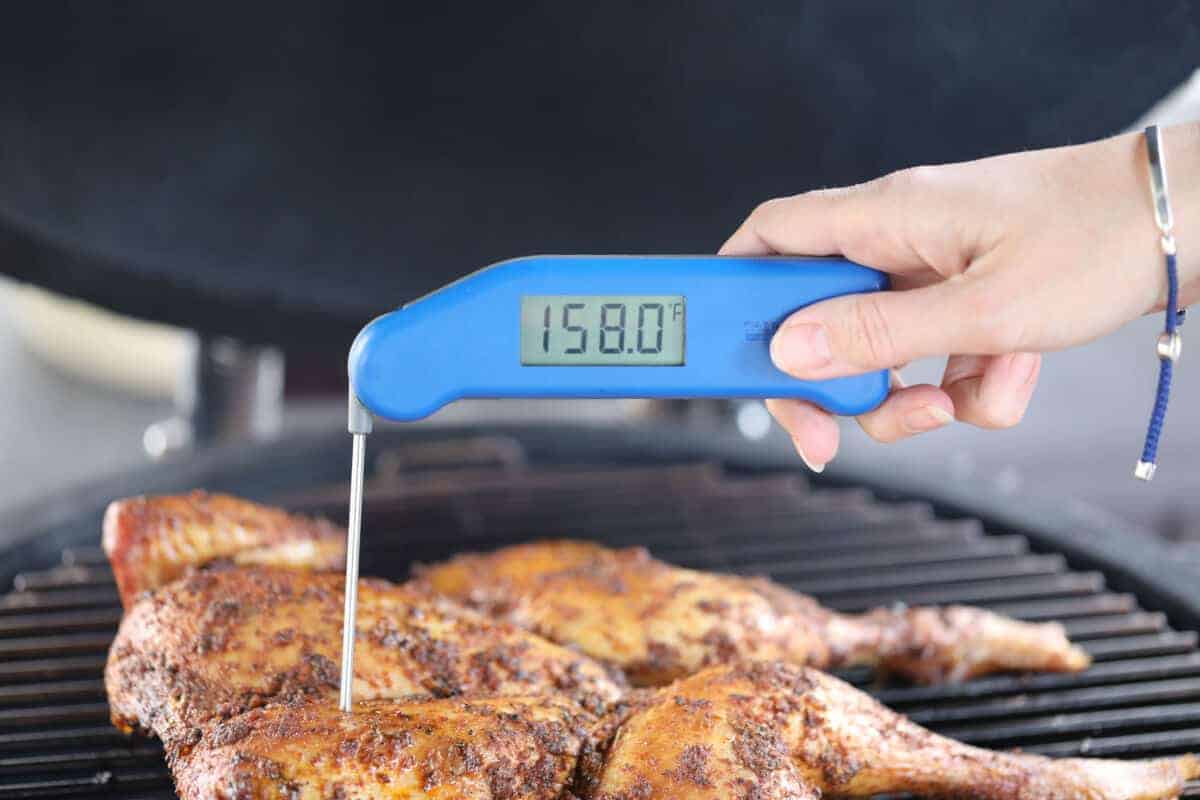
The only way – yes, the ONLY way — to accurately measure temperatures is with a decent digital meat thermometer.
Many cooks can and do 'cook by eye', but if you want consistently good results with your barbecue, you want to be able to accurately measure and control both the temperature of your smoker and the internal temperature of your meat.
When it comes to 'doneness,' a difference of just 5 degrees Fahrenheit can have a dramatic effect.
We recommend people to use a good, dual probe digital smoker thermometer.
A dual-probe model will allow you to set one probe up to read the ambient temperature inside your smoker, with the second probe inserted into your meat, so you can monitor your food as it cooks. Precision — and no guesswork!
For your pit probe: Sit it at grate level, at least a couple of inches away from the meat, so it is out of the cool air generated close by to the cold meat. This position will give the most accurate reading of your smoker temperature where the meat is actually cooking.
For your meat probe: Insert it right into the center of the thickest part of your meat, making sure it's in muscle, not fat, and is also away from any bone. You want to take the temperature of the meat in the very center of its thickest part, which is where it takes longest to cook.
Some items of food are just too small to have a 'leave-in probe' inserted though. Things such as thin steaks, fish fillets, or oysters.
For these foods, we recommend using a good instant-read thermometer instead. You will have to monitor and inspect the temperature of the food manually, and regularly, catching it at the right temp to remove from your smoker. If you don't have one yet, check out our guide to the best instant read meat thermometers.
Conclusion
Don't you feel so well-informed now?
If you didn't memorize everything, that's OK. Our smoking times and temps charts will always be here if you need a refresher!
Cooking meat to just the right temperature and doneness is part science and part art. A good thermometer is essential, of course, and so is a keen eye and experience.
If you don't have any of those things, don't worry too much. You can buy the first thing, and the second and third will come with time and practice.
Should you already have the experience part of the equation down, please feel free to comment below or share your thoughts with us. We like to know what parts rang true, and also anything you might disagree with.
Any tips and tricks are always eagerly welcomed within the barbecue community too!
Thanks for checking in with us for all your barbecue news and information — see you 'round the grill!
Source: https://www.foodfirefriends.com/smoking-times-temperatures-chart/
0 Response to "Best Temperature to Smoke Beef and Why"
Post a Comment